Text
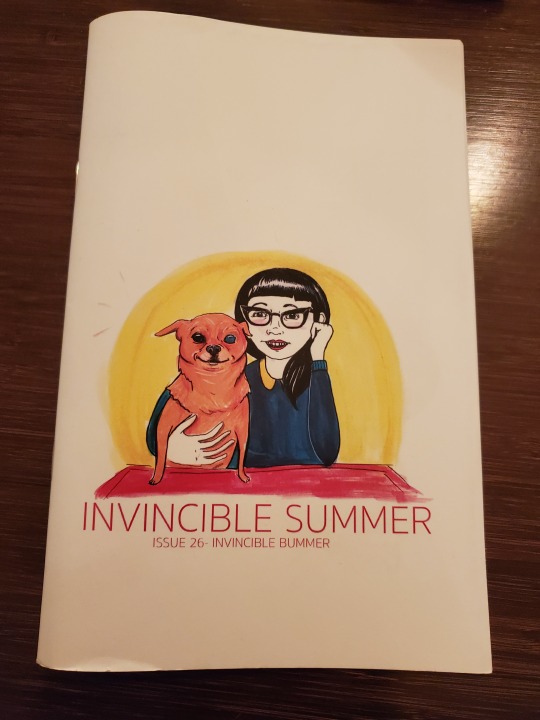
Anyone familiar with my tastes knows that Nicole J. Georges is one of my favorite cartoonists working today. Her books CALLING DR. LAURA and FETCH are absolute must-reads if you enjoy autobio...or even if you don't, her books may turn you around. So I was delighted when she handed me this mini-comic after she'd moderated a panel I was on.



This zine is a hodge-podge collection of the comics Nicole has been making lately. Some pages are thoughtful, elaborate paintings. Others are sketchy diary comics, funny and sad and sweet. But the comic that truly blew me away was...
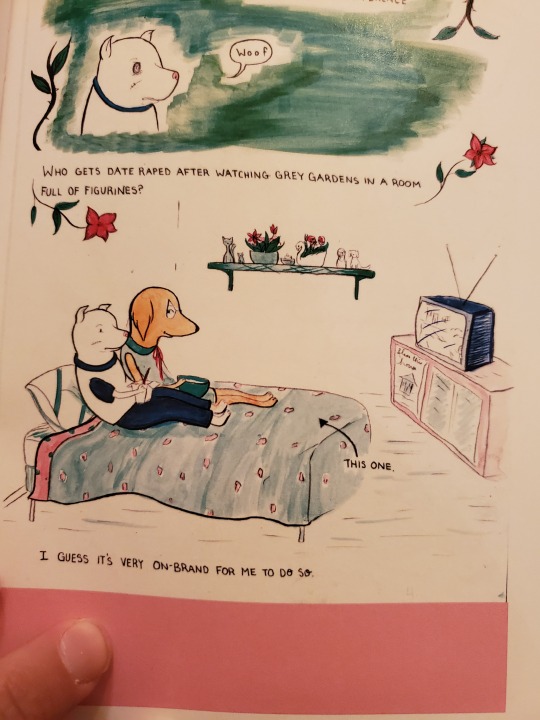
...a devastating personal story about date rape. It is told so beautifully, with equally beautiful drawings.
It's my favorite short comic of hers to date, and a good sign that there is much more in store for us on the Nicole J. Georges front.
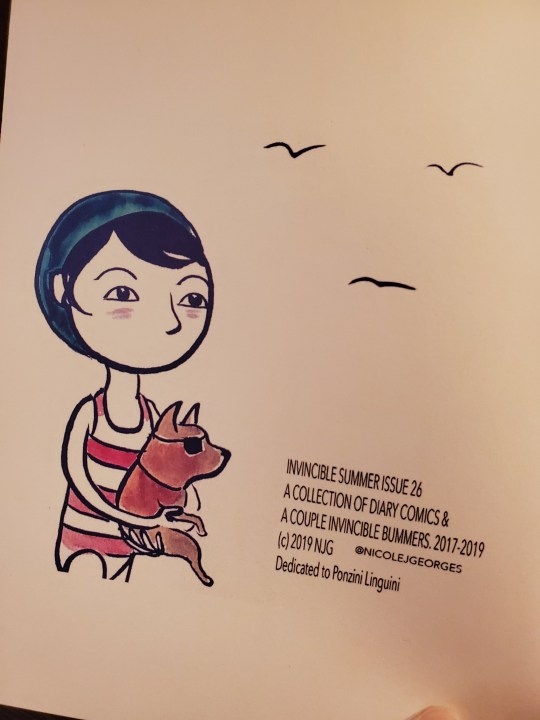
Sincerely,
@marinaomi
19 notes
·
View notes
Text

In MOUNTAINS, Molly Murakami imagines what is likely the fantasy of many--to get off the grid--in a short-story minicomic.
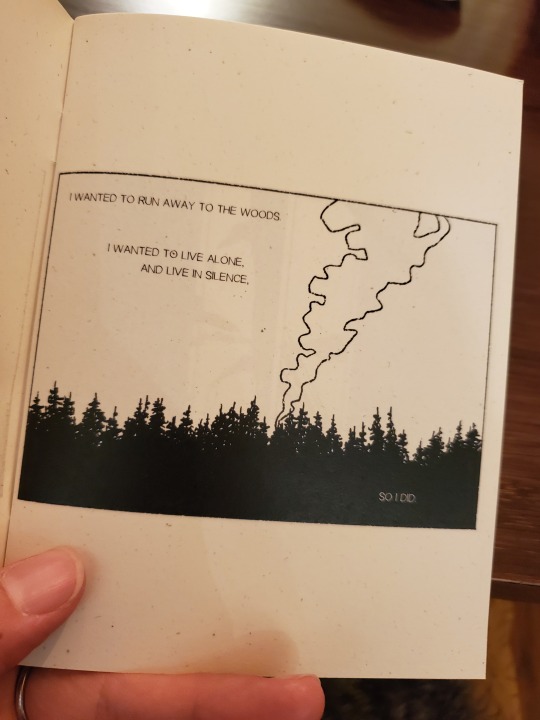



The drawings and text are meticulous and gorgeous, as you can see. And though the tone is generally somber, there was also lightness and humor.
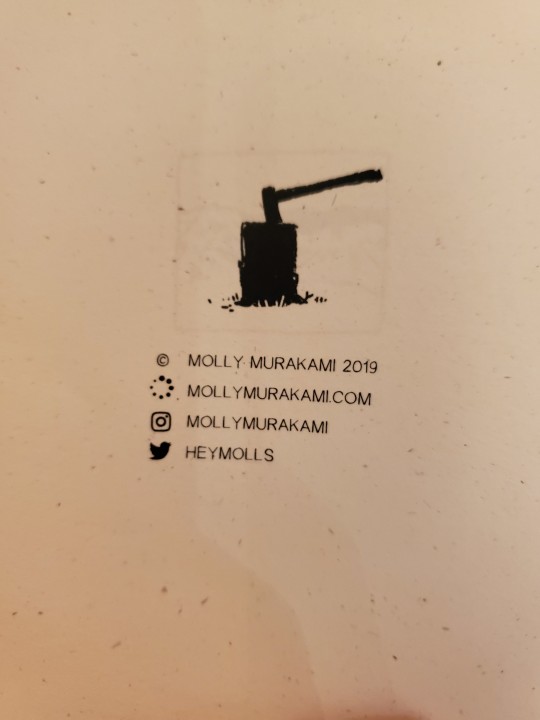
Keep an eye out for this one. I predict great things ahead.
Sincerely,
@marinaomi
77 notes
·
View notes
Text

Did you know that Vladimir Nabokov was a lepidopterist? I did not. But I was lucky enough to sit beside Susanne Reece at SPX this year, and obtain this lovely zine that showed me I have at least one thing in common with ol' Vlad.




Charming watercolors, interesting content, and handmade, small-print-run specialness! I encourage you to check out her work.
Sincerely,
@marinaomi
5 notes
·
View notes
Text
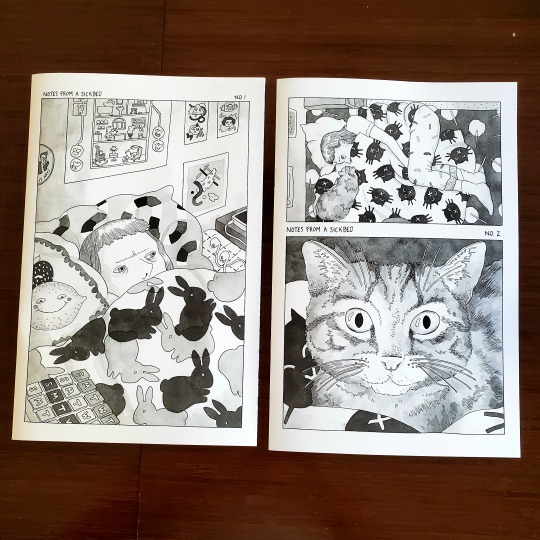
Notes From a Sickbed: Two excellent new autobio minis from indy queen Tessa Brunton detailing the feeling of being trapped in bed due to chronic illness. Gorgeously drawn with lots of humor and magical realism.
From book 1:
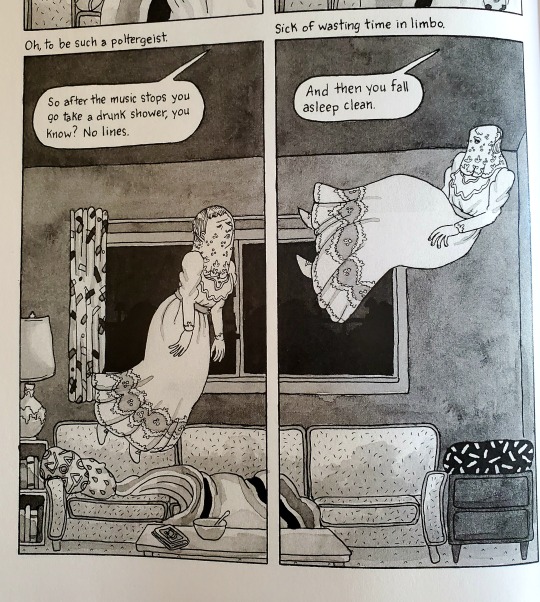

From book 2:


You can get the minis for ridiculously cheap on her website. Follow her on Twitter to read excerpts of the comics as she posts them. ❤️
5 notes
·
View notes
Text
Silver Surfer Black 1
by Donny Cates, Tradd Moore, Dave Stewart
I’ve read a lot of Silver Surfer comics. He is one of my favorite Marvel characters. I always try to see what’s up with the character, especially when there’s a new series. Generally speaking the Surfer is not very well handled.

Even the original creators didn’t really know what to do with him. After Surfer’s amazing first appearance and story (Fantastic Four #48-50) he was always kind of mis-used. The first Silver Surfer series by Stan Lee & John Buscema is pretty dull. The Surfer, trapped on earth by Galactus, travels around and mopes. His dialogue (actually mostly monologue) is painful to read. Kirby takes the series over for one issue, but it’s not enough to push him in a new direction. The series was cancelled after Kirby’s issue. Stan Lee hobbled the character by ‘reserving’ him for himself. No one could really do anything interesting with the character without Stan Lee’s say so. The first real interesting development of the character didn’t happen until 1987. Steve Englehart and Marshall Rogers teamed up on a new Silver Surfer series. This is the golden age for the character. Englehart freed the Surfer from being Earth bound and unleashed him as a character. In the first 12 issues of that series, Surfer and Mantis struggle against the Elders of the Universe as they plot to kill Galactus. It’s is a high water mark for the character. The series lasted for over 100 issues, went through a number of writers (with a memorable run by Jim Starlin) and artists, and eventually petered out. Since then we haven’t seen much new with the Surfer. Occasional guest appearances, a limited series here and there. Most recently the series by Dan Slott & Mike Allred seemed to want to revisit the triumphs of Englehart and Rogers by giving surfer a human companion (like Mantis in the Englehart run… or like Dr. Who’s companions!) and took the character into more camp territory… with uneven results.
I don’t really know where Silver Surfer Black is going yet. I like the art. I only recently discovered Tradd Moore’s work in The New World (Image, with Ales Kot). I really enjoyed the first couple of issues. I like the way he draws.

There’s a barely restrained surrealist/trippy component to his drawings. The Silver Surfer series seems designed bring that element out in force. There are a lot of psychedelic flourishes, unusual angles, expressionistic renderings, complex layouts, etc. Moore seems to be really having fun here. There’s a surreal fluidity to everything. Everything is flows, undulates, and bubbles like… a lava lamp. There’s not much to the story… at least so far…
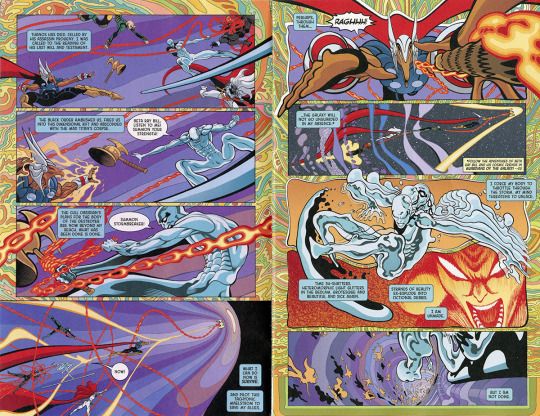
This series seems to be following on some big events involving the Guardians of the Galaxy & Thanos. I didn’t read the series so I don’t really know what’s going on. It doesn’t seem to matter. The opening sequence is designed to get rid of all the other characters, and to get Surfer to be on his own. Surfer & others are trapped in a black hole. Surfer uses his power to save everyone, but because he uses too much power to accomplish this, he gets sucked back into the singularity. He floats in darkness for what seems to be eons, until he stumbles onto some dark planet. The inhabitants are three guardians protecting a tower.
The design of the guardians let’s Tradd Moore get really expressive. The costumes are baroque, flamboyant, excessive; reminiscent of the most excessive aristocratic costumes of European Renaissance. All this reminds me of Druillet. His Lone Slone series is dense with medieval designs blown up into massive spaceships and complex armor. Tradd Moore seems to be treading similar territory, but there’s a clarity of line and form that brings to mind animation and Manga.
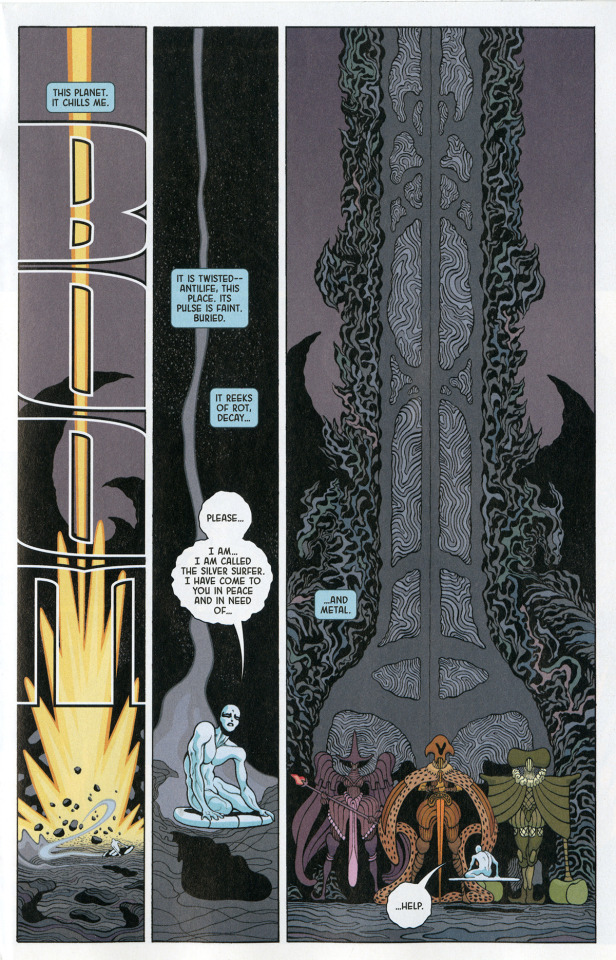
Surfer is determined to get past the guardians… and he does, only to be confronted with ‘Knull’ (null… oh right we’re in a black hole… the ultimate nullifier) another massive character, with massive flowing armor, and a super-massive sword covered in red goo. Who knows where this is going? I’m on board for now.
No Surfer series would be complete without a recap of Surfers origin. We have to be reminded of his cold-blooded service to Galactus, his complicity in the killing of trillions of lives… and witness his constant guilt and hand wringing.
One more note: the introductory paragraph that describes the Surfer on the credit page (and this is something that all Marvel comics have now, a film-like credits page) says that he is ‘coated with galactic glaze’. I’ve never heard his silver skin referred to in that way before. Is this official cannon? It made me hungry for glazed donuts.
Tom K
@transatlantis
41 notes
·
View notes
Text
David’s Reading: April/May
66. Electric Warrior 1, 1986 Doug Moench Jim Baikie, DC Comics
67. Legion of Super-Heroes 10, 1985 Paul Levitz Steve Lightle Larry Mahlstedt, DC Comics
68. Legion of Super-Heroes 11, 1985 Paul Levitz Ernie Colon/Keith Giffen Larry Mahlstedt/Karl Kesel, DC Comics
69. Electric Warrior 2, 1985 Doug Moench Jim Baikie, DC Comics
70. Legion of Super-Heroes 12, 1985 Paul Levitz Steve Lightle/Ernie Colon Machlan/Mahlstedt, DC Comics
71. Legion of Super-Heroes 13, 1985 Paul Levitz Steve Lightle Larry Mahlstedt, DC Comics
72. Tarzan 48, 1953, Jesse Marsh Dell
73. Champion Sports 3, 1974, Joe Simon Jerry Grandinetti Creig Flessel, DC Comics
74. Tarzan 61, 1954, Jesse Marsh, Dell
75. Tarzan 63, 1954, Jesse Marsh, Dell
76. Dakota North 1, 1986, Martha Thomases Tony Salmons, Marvel
77. Tarzan 64, 1955, Jesse Marsh, Dell
78. Battlestar Galactica 2, 1979, Roger McKenzie Ernie Colon, Marvel
79. Ghost Rider 64, 1982, Michael Fleisher Jack Sparling Tom Sutton, Marvel
80. Battlestar Galactica 20, 1980, Walter Simonson Klaus Janson, Marvel
81. Dakota North 2, 1986, Martha Thomases Tony Salmons, Marvel
82. Dakota North 3, 1986, Martha Thomases Tony Salmons, Marvel
83. Superboy 190, 1972, Leo Dorfman/Cary Bates Bob Brown/Dave Cockrum Murphy Anderson, DC Comics
84. The Return of Megaton Man 1, 1988, Don Simpson, Kitchen Sink
85. Thunderbolt 58, 1967, Pete Morisi/Sergius O'Shaugnessy Pete Morisi/Sam Grainger, Charlton Comics Group
86. Son of Satan 8, Bill Mantlo Russ Heath, Marvel
87. Legion of Super-Heroes 14, 1985, Paul Levitz Steve Lightle Larry Mahlstedt, DC Comics
88. Ghosts 1, 1971, DC Comics
89. Spectacular Spider-Man 120, 1986, Bill Mantlo Keith Giffen Vince Colletta, Marvel
90. Crossed Swords 1, 1986, Tom Zjaba Andrew Barrett, KZ Comics
91. Daemon Mask 1, 1987, Stuart Hopen Russ Martin, Amazing Comics
Electric Warrior: This is the first time I’ve read any of these and it’s a pretty promising series. It’s like a darker ‘80s version of Magnus Robot Fighter, I guess. Great drawing by Jim Baikie and neat story set up by Doug Moench. I’m curious about how this story goes, maybe I’ll read it online sometime.

Champion Sports #3: I love comics by Jerry Grandinetti, just great drawings.
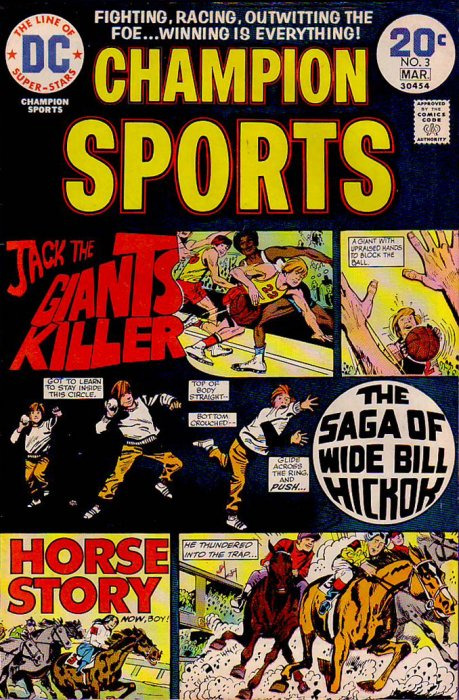
Dakota North This is a really fun series. I expected to just check out the Tony Salmons artwork and ignore the the rest but it’s a solid, fun comic. Will keep my eyes out for the rest of the series.

Crossed Swords and Daemon Mask: Two nutty comics from the black & white boom of the 80s. Crossed Swords is a goofy fantasy comic with wizards and warriors, real amateur artwork but I found it very charming. If I ever feel like doing a fantasy comic it’s going to be Crossed Swords #2. Daemon Mask has really nice drawings and a completely oddball story inspired by the old time pulp magazines. They were both definitely worth the half dollar apiece I paid for them.


Stuart Hopen, writer of Daemon Mask, has some info about the comic on his website and perhaps you’d like to check out this archive of the same webpage
Odds and Ends Roundup: Tarzan by Jesse Marsh is always fun; more Legion; a dash of Dandy Don; brand X super-heroics from Peter Cannon Thunderbolt by the stellar Pete Morisi; wouldn't mind seeing a high-quality reprint of Russ Heath’s Son of Satan #8; Battlestar Galactica by Simonson -- did I see that they made an Artist’s Edition out of this??; My copy of Ghosts #1 was so thrashed that I tossed it in the wastebasket when I was done reading it.
- David K. | twitter | instagram
16 notes
·
View notes
Text
David’s Reading: March/April
42. Claw the Unconquered 10, 1978, David Michelinie, Keith Giffen, John Celardo, DC Comics
43. Eclipso 7, 1993, Keith Giffen/Robert Loren Fleming, Ted McKeever, DC Comics
44. All-Star Squadron Annual 3, 1984, Roy Thomas, Various, DC Comics
45. Action Comics 565, 1985, Mort Todd/Keith Giffen/Robert Loren Fleming, Kurt Schaffenberger, Keith GIffen, Bob Oksner, DC Comics
46. The Mighty Crusaders 2, 1966, Jerry Siegel, Mike Sekowsky/Paul Reinman, Paul Reinman/Frank Giacoia/Joe Giella, Radio Comics/Archie
47. DC Silver Age Classics Detective Comics 225, 1992, DC Comics
48. The Mighty Crusaders 7, 1966, Radio Comics/Archie
49. Legion of Super-Heroes 1, 1984, Paul Levitz/Keith Giffen Keith Giffen Larry Mahlstedt, DC Comics
50. Legion of Super-Heroes 2, 1984, Paul Levitz/Keith Giffen Keith Giffen Larry Mahlstedt, DC Comics
51. Legion of Super-Heroes 3, 1984, Paul Levitz/Keith Giffen Keith Giffen Larry Mahlstedt, DC Comics
52. Legion of Super-Heroes Annual 3, 1984, Paul Levitz/Keith Giffen Curt Swan/Keith Giffen Romeo Tanghal, DC Comics
53. Legion of Super-Heroes 4, 1984, Paul Levitz/Keith Giffen Steve Lightle Larry Mahlstedt, DC Comics
54. Legion of Super-Heroes 5, 1984, Paul Levitz/Keith Giffen Steve Lightle Mike DeCarlo, DC Comics
55. Legion of Super-Heroes 6, 1985, Paul Levitz Joe Orlando Larry Mahlstedt, DC Comics
56. Legion of Super-Heroes 7, 1985, Paul Levitz Steve Lightle Larry Mahlstedt, DC Comics
57. Gregory, 1989, Marc Hempel, Piranha Press/DC Comics
58. Legion of Super-Heroes 8, 1985, Paul Levitz Steve Lightle Larry Mahlstedt, DC Comics
59. Terminator: The Burning Earth 1, 1990, Ron Fortier Alex Ross, Now Comics
60. DC Comics Presents, 80 ,1985, Paul Kupperberg Curt Swan Dave Hunt, DC Comics
61. Manhunter Special 1, 2017, Giffen/DiDio/Humphries Buckingham/Rude, DC Comics
62. Legion of Super-Heroes 9, 1985, Paul Levitz Steve Lightle Larry Mahlstedt, DC Comics
63. Space Family Robinson Lost in Space 25, 1967, Dan Spiegle, Gold Key
64. Splitting Image 1, 1993 Don Simpson, Image Comics
65. Splitting Image 2, 1993 Don Simpson, Image Comics

Well, I read a ton of Keith Giffen comics, new and old, this month. I think I burned myself out on him! The Manhunter Special from 2017 is the most recent comic by him that I’ve read -- the art is layout/breakdowns by Giffen and finished by Buckingham but it’s so close to Giffen’s line that it looks like he drew it. It’s a lousy comic.

I also started re-reading the Baxter paper era of Legion of Super-Heroes and I have to admit, it’s not great -- for die-hard LSH fans only. I like the art by Giffen and later by Steve Lightle but the stories are not very exciting or well-told. I’m planning to read the whole series so we’ll see how it goes.
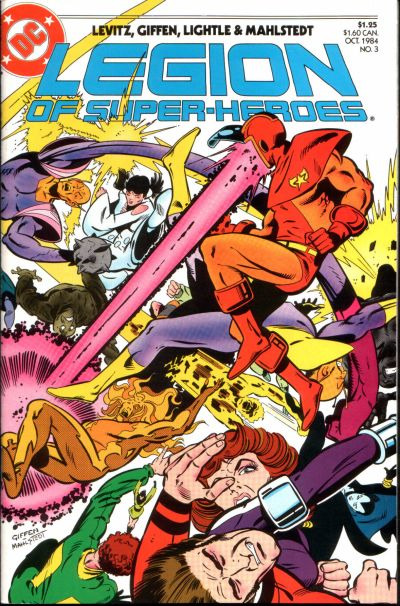
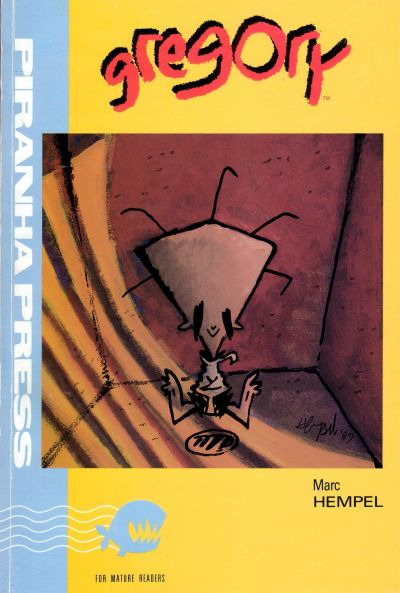
Marc Hempel’s Gregory is a really nice looking comic, really good cartooning. May be problematic subject matter.
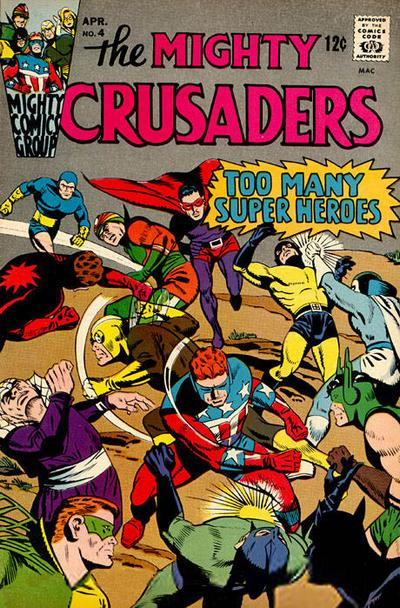
The Mighty Crusaders stars the super-heroic characters from MLJ/Archie comics. I like these ‘60s off-brand heroes (everybody was riding the coattails of the Batman TV show, I think?) and Jerry Siegel is good at writing them. I try to pick up MLJ mags, Dell’s Super-Heroes and monster Heroes when I see them cheap.
More Don Simpson, he makes fun comics.

- David K. | twitter | instagram
7 notes
·
View notes
Text
I Took Some Paying Work and My Posting Suffered, 4/28/19
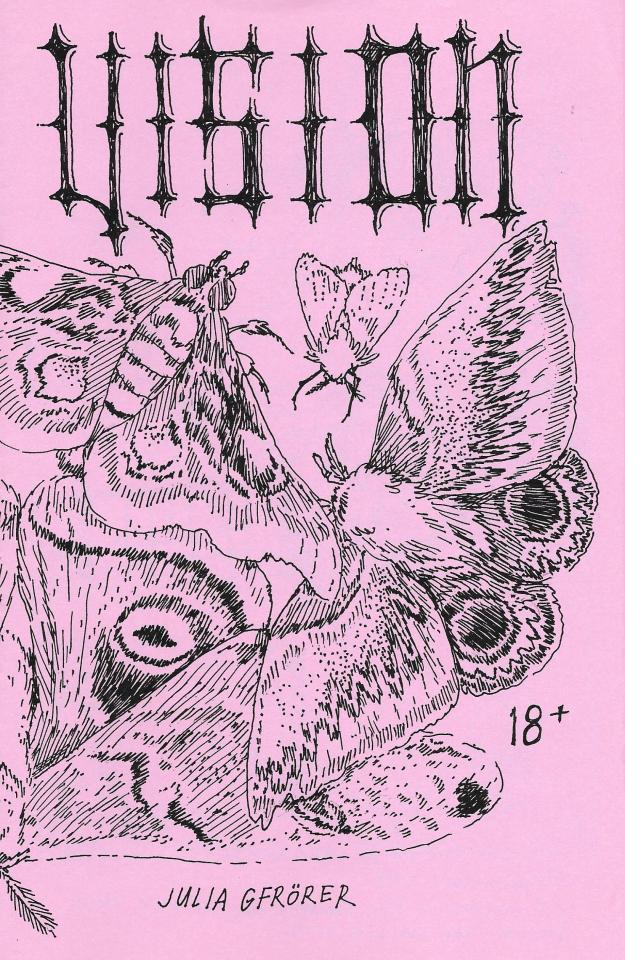
Vision, Part One, Julia Gfrörer: This 24-page comic is from the 2019 MoCCA Arts Festival, which I did not attend. Instead, I ordered it online directly from the artist, because Gfrörer makes comics that are unlike anyone else’s - bleak, elliptic fictions, often in a historical setting, lashing stolid characters with sexual fervidity and occasional bloody violence until they hemorrhage despair, fear, desire. My favorite of her works, the 2014 comic Palm Ash, is an account of Christian martyrdom in the Colosseum that inhabits an exquisite space where it reads as both a straightforward climax-to-the-lives-of-the-saints-type of narrative, and a disquisition on religion as spectacle, with all participants subject to the possessiveness of the men on top... a situation which transcends the particularity of the fable.

Vision, Part One is the first half of a two-part story, which also concerns folklore and possession. The heroine is an orphan, living in a well-appointed home with her brother, and working at the bedside of an ill and abusive woman. But up in her room is a magic mirror, which speaks in the self-deprecating-and-then-demanding voice of a punter urging on the show of a woman at the other end of a webcam. There is an unsettling air of sexual exploitation all over the house, but Eleanor can see nothing: certainly not the lover in her mirror, as all it ever shows her is herself. “You were longing for men to touch you before you even learned to walk,” says the portal, its dialogue balloon reporting from images of the heroine masturbating with a candlestick. It does not matter if this is a magical exchange, or literally a means of addressing herself. She cannot penetrate the hard glass of the screen, and meet her lover; she cannot become the woman reflected. She must sleep, and wake, and dress again.
*

Goodnight Seattle, Julia Gfrörer: I also didn’t go to MoCCA last year, and this was Gfrörer’s debut for that - an eight-page homage to the inescapable 1990s sitcom Frasier. The main feature is a three-page comic (20-24 panels per page) which sees Seattle hit with a nuclear blast and, basically, plunks the Frasier cast down into the middle of Threads. Witticisms and killings ensue -- I dare not reveal the awful fate of poor little Eddie -- but the central joke is one of wide application: that Frasier Crane, psychiatrist, even in the fact of society’s collapse, remains utterly convinced that offering patrician advice to strangers is the most important thing in the world. A one-page backup comic is even more trenchant, riffing on the forever-unseen character Maris as vanished due to an eating disorder, with graphic descriptions of physical symptoms giving way to sitcom-ready fat jokes, just like the ones you heard in that recent superhero movie blockbuster. Also includes paper dolls.
*

The Whitney Comics Biennial, Matthew Thurber: There was a really lively interview last month between the artist and educator Austin English and Thurber, author of the satirical graphic novel Art Comic, and that interview has now inspired a short comic for The New Yorker. It’s a rich 28 panels, lightly tapping the lower-hanging fruit of cartoonists as sadsacks starving for validation while whacking hard and often at elite institutions as machines for exploitation - especially those institutions that understand the language of Art. That artists long for the type of grand statements these institutions can facilitate, even knowing the facts, is the poignant chassis of all these gags.
-Jog
7 notes
·
View notes
Text
The Phantom Zone (DC, 1982)

This 4 issue miniseries by Steve Gerber and Gene Colan is one of the darker and more intense Superman stories I’ve read. The first issue is a claustrophobic, paranoid, sci-fi story, no superheroics until issues 2 and 3. Charlie Kweskill works in the production department at the Daily Planet. He’s literally falling down on the job, weird headaches, fatigue and then hallucinations. He’s haunted by recurring visions of a planet half a galaxy away, where volcanoes spew gold, jewelled mountain valleys, blood colored jungles - Krypton.
His disembodied consciousness witnesses the history of the Phantom Zone, its creation by Jor-El, and then 16 pages of great detail are dedicated to 10 different individuals banished to the nether-dimension. Gra-Mo’s foiled robot rebellion; Jax-Ur’s unauthorized missile tests that destroyed a populated moon; Va-Kox’s genetic experiments that polluted the Great Krypton Lake; Dr. Xadu’s illegal suspended animation research; Faora Hu-Ul, misandrist serial killer; General Zod, homicidal dictator; Az-Rel and Nadira a pyrokinetic/psychokinetic couple; Kru-El, Jor-El’s wicked cousin; and finally Quex-Ul a miracle healer who poached Rondor horns for his cures.
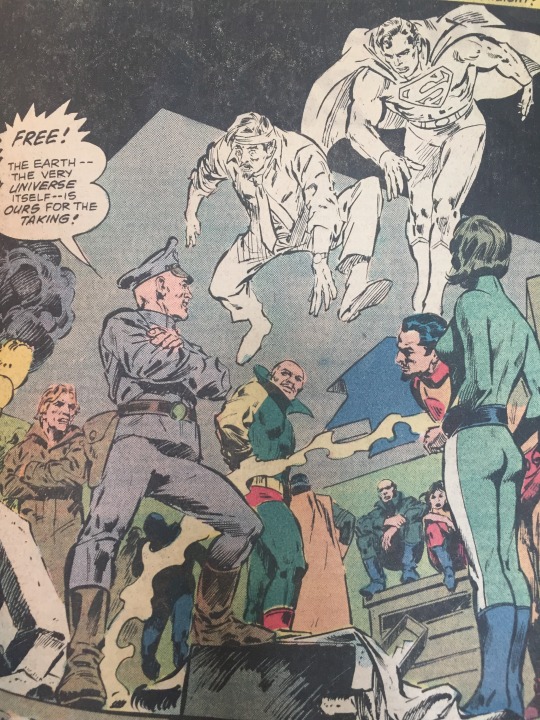
Phew where is this all going?! Krypton dies less than a month later. Ironically, those trapped in the Phantom Zone survive. The ghosts in Charlie’s visions compel him to steal certain electronics and assemble a machine... which frees the Legion of Infamy from the nether-world while trapping Charlie and Superman in the twilight dimension!

Issue 2 is packed with villainy that rivals current event books like Dark Knight III or other mega crossovers, all in 27 pages. The evil Kryptonians spill out into a gritty New York City-esque Metropolis, killing cops, breaking into the Fortress of Solitude and destroying Superman’s only means of escape from the Phantom Zone. They toss the Justice League satellite out of the solar system, destroy all Earth satellites in orbit, which triggers the US and Russia to launch their nukes. We’re on page 9.
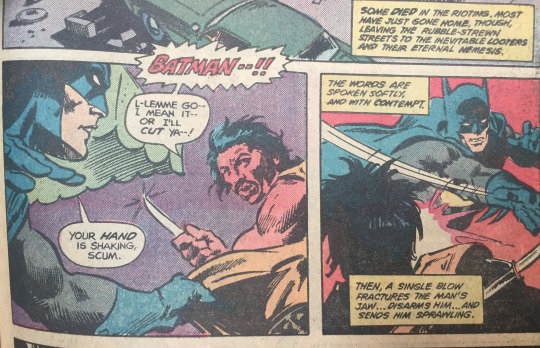
Supergirl and Wonder Woman show up to prevent WWIII. Green Lantern gets his ass kicked and power battery stolen. Supergirl seeks Batman’s help because... he’s the world’s greatest detective. There’s rioting in Gotham City and she interrupts him breaking the jaw of a looter. The issue ends with Superman and Charlie finding a wall of energy in the Phantom Zone. The only way out is through...

Issue 3 is a total metaphysical journey beyond the purple realm that most people associate with the Phantom Zone, into deeper levels of the void. Gerber excels at these psychic narratives. He’s made his own maps and treats the liminal drama earnestly with seriousness and respect.

Superman’s third eye is ripped open and the true nature of the Phantom Zone is revealed - it is an interference pattern, a border world, where a crystalline dimension called Aether, manifested by the thoughts of the oversoul, meets the Earth.
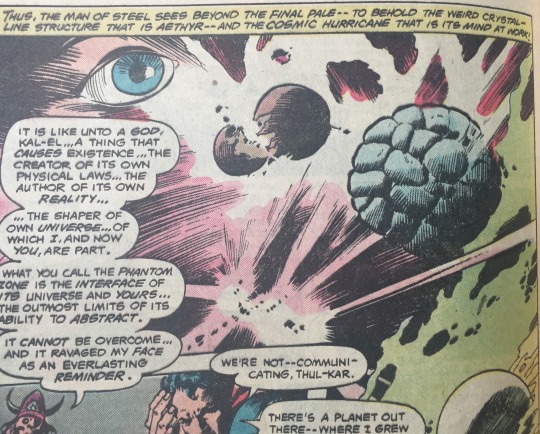
Superman shrugs off this heady revelation - he is super determined and super focused on only one goal - returning to that home called Earth and saving all his friends. They rush deeper and deeper into the void while Zod reveals his super weapon ready to send the entire planet Earth into the Phantom Zone.
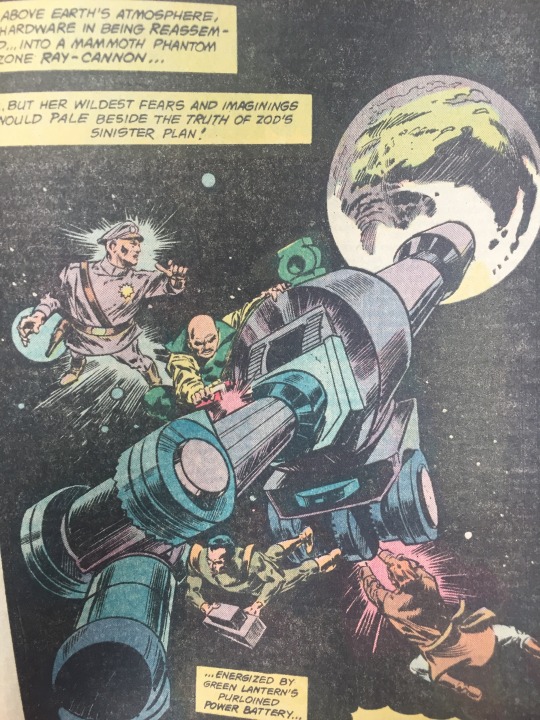
Issue 4 - back to the punk, underground, new wave Metropolis of 1982, we witness the birth of a new sound - Bizarro!

All the heroes and villains clash. Superman flies directly into Aether, towards annihilation. He faces the metaphysical mind of the oversoul - and does not blink!
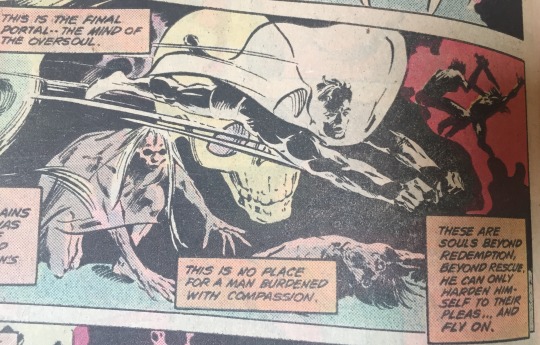
His body, soul and sanity have been pushed to the limit - he returns to the tactile world and he is pissed! It’s a serious and effective depiction of an angry Superman.

The cataclysmic battle fills all 26 pages of this issue. Zod and the other survivors are not dispatched back to the Phantom Zone until the 3rd panel of the last page, leaving only 2 panels for Superman to fly off into space to retrieve the Justice League satellite, alone with his thoughts. His super friends are wise enough not to ask about the ordeal he’s just been through.
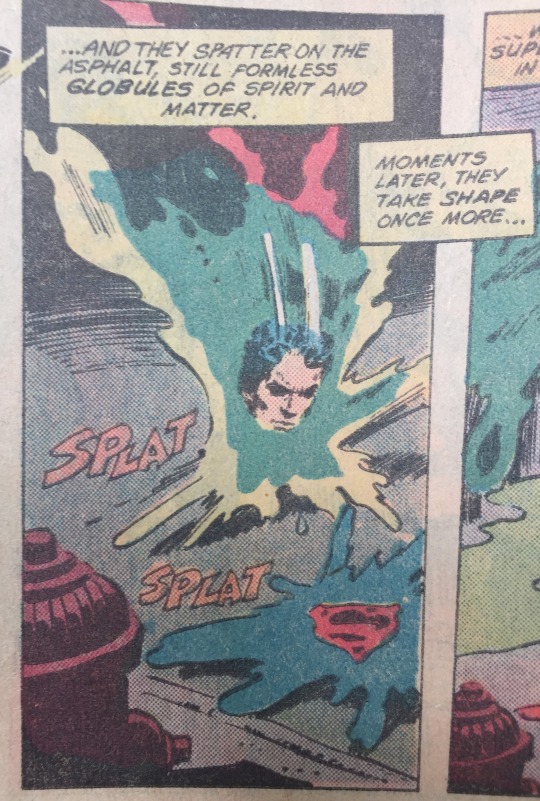
42 notes
·
View notes
Text

Rodney: The Premonition, “Charlie Trumper” (Eddie Campbell & Phil Elliott): This is a really lovely edition for a comic strip serial - a little bigger than 8” x 11”, all its 36 pages scanned from the original art or filled with notes or letters or script excerpts or preparatory drawings. It was crowdfunded, and you’ll need to check Phil Elliott’s eBay page to see if he has any left. “Check the artist’s eBay page” now joins “please crouch on this record label’s homepage to see if they’ve printed more” and “Facebook message the Japanese publisher, they know English” in the pantheon of Steps to Buy Comics in 2019, as presented by me.
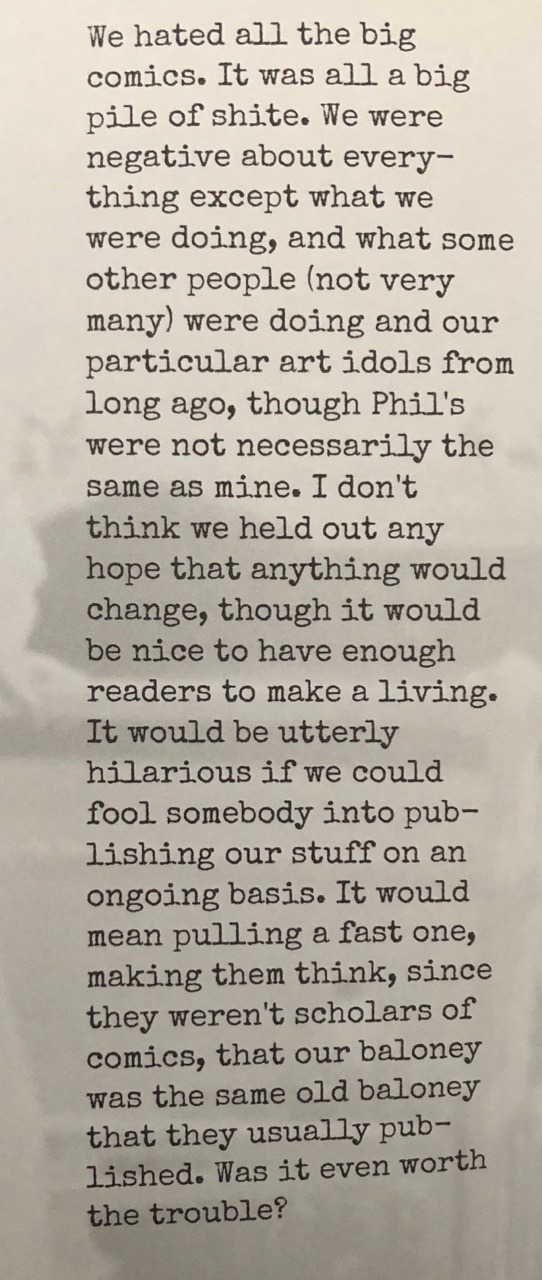
This is from an introduction by the strip’s writer and letterer, Eddie Campbell, who gives us a sense of the milieu in 1984, when “Rodney” ran in the weekly UK music paper “Sounds”. It reminded me quite a lot of sentiments expressed by the artist Chris Ware in his 2017 art book-cum-memoir “Monograph”, despite one ocean’s and the better part of a decade’s distance:

Campbell frames it terms of scholarship, of taste, while Ware alludes to a spirituality of the human authentic, gunked by commerce, but for both the idea of working in an alternative culture is presented as necessary for the artist, because the mainstream culture is completely worthless. I don’t think this separation is so common a thing anymore, in part because I think the ever-consolidating gigacorps of today are very adept at corralling alternative viewpoints under their banners - many ways to earn money in the absence of a monoculture.

The suite of strips that included the “Rodney” serial was Campbell’s first paid work in comics, and close to that for Elliott. As Campbell tells it, “Sounds” was interested in ‘orrible work: something to shock the squares, but not raise so great a shock as to endanger the venue’s profit. The American behemoth MTV teetered similarly atop this foundation, and to great success; there was no such trash allowed my Catholic household’s television as a child. But as an adult, I sense the whimsy — the theatre — behind this small, bloody epic, which Elliott draws in a sprightly and clean-lined style that connects “Rodney” to the continental trend for reviving the aesthetics of the Belgian comics midcentury... I do not know if “Sounds” was aware of how fashionable they’d gotten.

To an American, though, “Rodney” — full title: Rodney: The Premonition II (The Astounding Autobiography of the Man Who Will Blow Up the World in 1985!!!) — recalls the fine tradition of the alternative weekly comic strip, the best examples from which could offer a really sharp rejoinder to the complacency of popular media circa then. Modeled titularly after the film “Damian: Omen II”, “Rodney” finds its title character born with a button that can kill anyone or anything. So he kills his cousin; he kills his classmates; he kills his parents; his lover; his boss; the Parliament; the media; all of the world’s valuable licensed characters; and all of the different types of music listeners on Earth, all of whom are annoying, and must die. All is ho-hum to Rodney, who understands that to live is inevitably to die, and that perhaps if we are aimless in this life, it’s because we’re shaking through the death rattle of a species already fatally wounded - and don’t dare beg recourse to God, for Rodney shall kill Him next! A few people told me on Twitter that they encountered this strip long ago and it really opened their eyes to what comics could do; Campbell says they got no feedback at the time save for one bit of reader mail calling them shit. Elliott prints two letters from “Sounds” right next to each other: the letter accepting them for work, 1984, and a letter booting them from the venue with a sneer in 1986, in the midst of a later serial. That’s life among the living dead.
-Jog
8 notes
·
View notes
Text

Pierrot Alterations, CF: And then, suddenly - a new book from Christopher Forgues, one of the madly-loved art comics figures of the 21st century, who had seemed to turn away from even small-press book publishing of late. This 52-page project, however — lavish with sawed-off corners and exposed spine and all-color innards — comes from Anthology Editions, an imprint of the Brooklyn record label Mexican Summer. The first batch sold quickly, but there should be more in a few weeks.


How you get there from here is the question posed to me by this stack of drawings. The first 25 or so pages are devoted to a quiet two-panel-per-page narrative in which a small crew of clowns erect a tiny city; they work, drink, fight, and occasionally ride each other like erotic horses, though pantaloons-clad sourface Regulus has manifested psychic abilities that the rest of the crew indulge as another frivolous distraction from their dialectical labors. Then, suddenly, a miraculous transformation occurs, in which a series of die-cut gaps in the book itself guide us into a series of crowded, denuded, domestic purple drawings, interspersed with and ultimatly supplanted by incomprehensible faux-photo ID images and official-looking documents and dystopian pencil images drawn atop calendar pages redolent with decomposing architecture and tiny faces in tiny circles.



What does it all mean? Nothing; it’s just a bunch of sketchbook pages dropped in at random to plump up a short comic in a faintly suggestive manner so as to tickle the arrogance of flatulent critics-cum-marketers and fool hapless culture consumers into paying twenty dollars for a tiny book and you should never, never trust naughty artists and/or Brooklyn hipsters again!
-Harlequin

Among the first of the ‘calendar’ pages is a schematic for Alterations on the Pierrot form, in the Pierrot Quality Amphitheater, where characters line up in discreet sections of a walled stage like dates stuck in boxes, peering at each other. “[P]oetry means very little if taken in its practical sense,” CF muses in a brief text coda. The Pierrot of the newer traditions, the longing Pierrot, seeks an impossible sense of art amidst the building of tradition: Regulus, the Leo, levitating and transforming, his flight from the stagebound story of one half of the book revealing a future of increasingly varied activities, collapsing into categorization and suppression. It is the ember of desire, the Idea, “poesis” encumbered, gradually, by practice and consideration and concretization and more, more, more, until the city of this art is a prison. Art as a process of life vs. the life of art as process. The back cover of the book depicts a woman in modern dress smashing a rock through a window, and clowns then scrambling to build a brick wall. What do you do when even dancers seal you in? Vanish?
-Jog
13 notes
·
View notes
Text
Catch Up
I feel a little bad that I haven’t posted in like a month but, well: hey I got laid off! It’s put a little strain on my reading for pleasure. I’m also more than happy if this blog is an excuse to get to read more @snubpollard writing. However, I wanted to get this up before the habit of blogging about random comics left my muscle memory.
PS: Go look at my Patreon, I’m going to be posting comics there exclusively starting in May.
Comics Read Since the last time I posted over a month ago:

Valerian: The Complete Collection volume 2 by writer Pierre Christin & Jean-Claude Mézières
Go-Bots #4 by Tom Scioli
Marvel Two-In-One Epic Collection: Cry Monster (Marvel Two-In-One (1974-1983)) by Steve Gerber , Bill Mantlo , Len Wein , Mike Friedrich, Chris Claremont , Roger Slifer , Marv Wolfman , Scott Edelman , Tony Isabella , Sal Buscema, Ron Wilson , Jim Starlin , Gil Kane , George Tuska , Herb Trimpe , Bob Brown , Arvell Jones , John Romita
These.. I found these unreadable. I was there to get my Gerber on but it was just a mostly ugly mess. I gave up halfway through.

Punisher #39 by Mike Baron, “Jack Slamn” & Jim Sherman
I’m on a Jim Sherman kick. He’s great, I’ll probably do a whole thing about him. This Punisher comic is part two of 3 or 4, not sure because Sherman only draws this episode and that’s why I bought it. It’s also got pencils credited to an obvious pen name that never appears in comics again, so it has me curious about the story behind the scenes. Anyway there’s some uncomfortable racial shorthand but generally this is a fun comic with Jigsaw being weird and pathetic, Frank’s got his face all cut up, and (spoilers!) a cult leader that seems to have actual healing powers. Whoever pitched in to pencil it, Sherman still brings the art home and it looks mostly pretty great.
Fase 1 Fazers # 1 by Vic Bridges
Dude loves John Byrne. Sort of a Teen Titans/X-men/Legion of Super Heroes kind of riff. I liked Bridges’ work on the Savage Dragon spin off Freak Force.


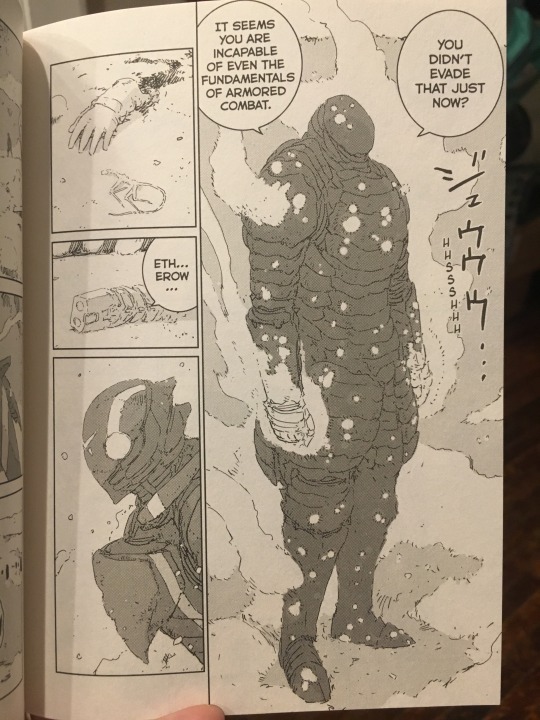
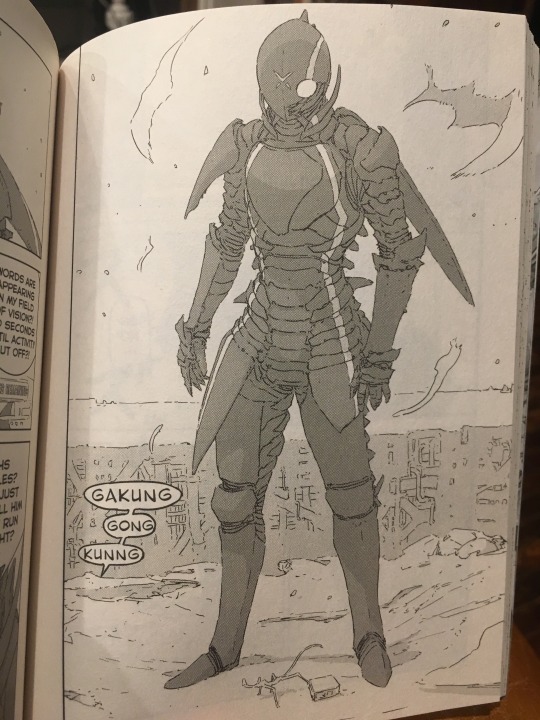
APOSIMZ vol 1 & 2 by Tsutomu Nihei
I’ve been really excited about these two books. Right off the bat, aesthetically it’s Nihei’s prettiest drawing. It looks like Miyazaki and CF had a baby. He’s a really interesting artist in part because he basically tills the same field in every series—he’s got tropes. But while he plays the same song every time, he also jumps genres from series to series. Don’t get me wrong, they’re all sci-fi dystopias set in a series of wastelands and tunnels filled with tubes, There’s usually some sort of zobie virus, the bad guys are essentially Cenobites, and the heroes are still Keanu-dopey badasses—but if Knights of Sidonia was his Gundam/Macross riff, Aposimz is his Kamen Rider. Needless to say, I’m here for this shit.
Oblivion Song #13 by Robert Kirkman & Lorenzo De Felici
The art’s as good as ever, maybe better, & the narrative jump helps out with some of the problems I was having with the plot.
Little Bird #1 by Darcy Van Pogeest, Ian Bertram, & Matt Hollingsworth
This is easily one of the strongest first issues I’ve read in a long while. It feels like a post-SCOUT kind of comic, which is honestly super refreshing in 2019. Amazing art and nice restraint from worldbuilding-salad (a pet peeve of mine) on the part of the writer.
Outer Darkness #5 by John Layman & Afu Chan
Superman #9 by Brian Bendis, Ivan Reis & Brandon Peterson
Action Comics #1008 by Bendis & Steve Epting
Head Lopper & the Knights of Venora #3 (of 4) by Andrew Maclean
Peter Cannon, Thunderbolt #2 by Kieron Gillen & Caspar Wijngard
Martian Manhunter #3 by Steve Orlando & Riley Rossmo

RUNE #6 by Chris Ulm & Barry Windsor-Smith
This was variously a dopey, fun, and occasionally problematic comic. Not one for the ages, but Barry Smith is still pretty on fire here even though/because(?) everything feels really goopy in a vaguely John Watkiss-y way.

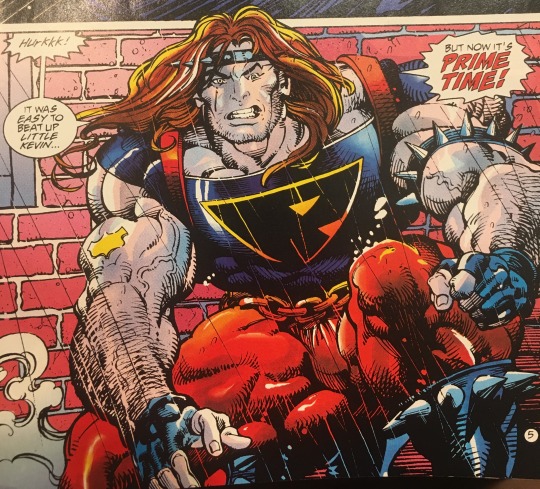
Brave & The Bold #154 by Bob Haney & Jim Aparo
Metamorpho always gets my money, as does Jim Aparo.
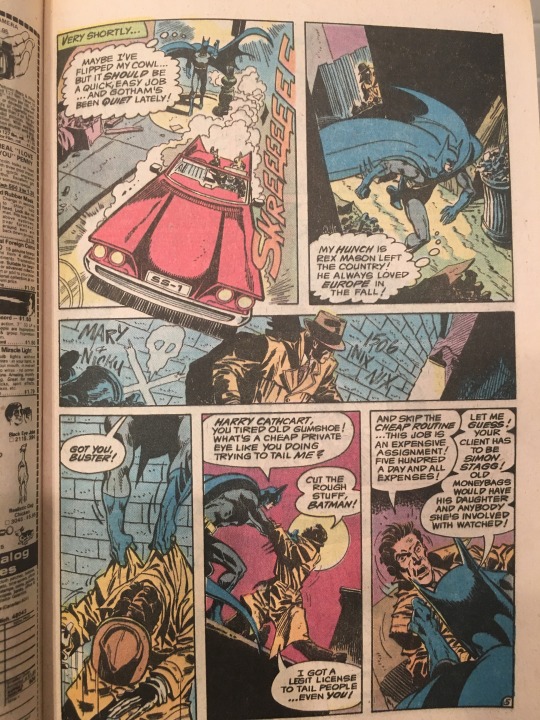
-zack / @ghostattack
12 notes
·
View notes
Text
More Superhero Comics, Revealing My Reactionary and Facile Engagement with Art as Little More Than the Accrual of Social Capital, Benefiting Nobody But Myself, 4/7/19
The League of Extraordinary Gentlemen Vol. 4: The Tempest #5 (of 6), Alan Moore, Kevin O’Neill, Ben Dimagmaliw, Todd Klein: This is an often very funny issue, set up like a pasted-together UK edition of old US pre-Code horror and crime comics, which, in addition to being funny, plumps up the page count as the plot moves maybe two or three tics forward in advance of the very-last-issue-of-LoEG-ever. The conservative in me wonders why we’re being this digressive in the penultimate number of the entire saga, but then -- at least since “The Black Dossier” -- this project has been more about positioning various strands of fiction and their accrued cultural baggage against one another than telling a propulsive adventure story. Anyway: the realm of Faerie, having easily survived an attempted nuclear strike on the collective imagination by a military-corporate black ops fiction squad comprised entirely of various revamps of James Bond, has brought in every character from every game, comic, cartoon, TV show, movie and book reality with everything for a HUGE apocalypse!
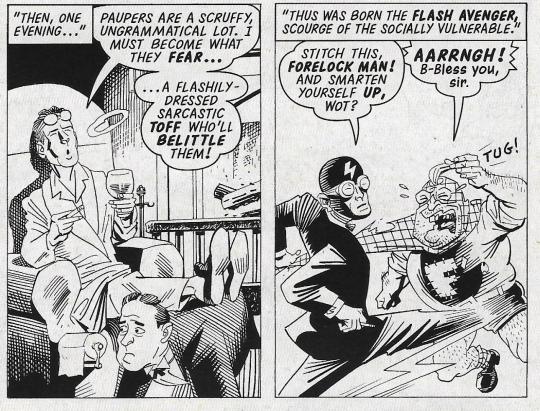
Scenes of bedlam involve: the life story of Victorian painter and murderer Richard Dadd; cameos by Stardust the Super Wizard and David Britton’s Lord Horror; the oeuvre of musician Warren Zevon, brought to terrifying life; a Corbenesque image of a nude muscleman’s massive dick flapping into battle in 3-D; Mick Anglo’s Captain Universe, presented by Moore in unmistakable evocation of his own Marvelman/Miracleman stories of decades ago; a ghost wearing the word CRIME on his head a la Charles Biro’s Mr. Crime, the greatest American comic book horror host; at least one figure from the annals of racist caricature firing powerful sound waves from his mouth; a monster named Demogorgon, the leviathan of Populism, which the heroes allegorically cross as a footbridge en route to a safehouse named the Character Ark; a page-long parody of Batman (via the forgotten UK superhero playboy character the Flash Avenger), describing his origin as motivated entirely by hatred of the poor; a text feature telling of UK comics artist Denis McLoughlin, who worked consistently since the end of WWII, never made enough money to retire, and spent decades as an elderly man drawing for survival on titles he hated, eventually taking his own life in his 80s; and the secret of what happened to all the British superhero characters after the midcentury, which is that they were all eaten by Capitalism, pretty much. I laughed a bunch, but if you think LoEG is tedious shit, this probably won’t turn you around.
*
Savage Dragon #242, Erik Larsen, Ferran Delgado, Nikos Koutsis, Mike Toris: The latest installment of the longest-running Image comic written and drawn by one of the Image founders, now deeply dove into problematic network tv drama stuff. The Dragon’s relationship with his partner Maxine is still strained in the wake of her sexual assault, a video of which the Dragon viewed in the police archives; meanwhile, the mother of one of the Dragon’s young children has been telling them all the truth about their parentage, further disrupting the peace of the household. Also, a formerly aggressive sex robot has joined the gang, dressed as an anime maid. And, the Dragon reluctantly teams up with the mid-’00s-vintage sexy heroine character Ant (which Larsen purchased from creator Mario Gully a few years ago) to foil a scheme by elderly elites to project themselves into the bodies of mythic gods in order to provoke the Rapture. Most interesting to me, however, is a bonus segment in which Larsen presents newly-lettered pages of his preliminary solo work on “Spawn” #266 (Oct. 2016), which would later be filled out by contributions from Todd McFarlane, colorist FCO Plascenscia, and letterer Tom Orzechowski.

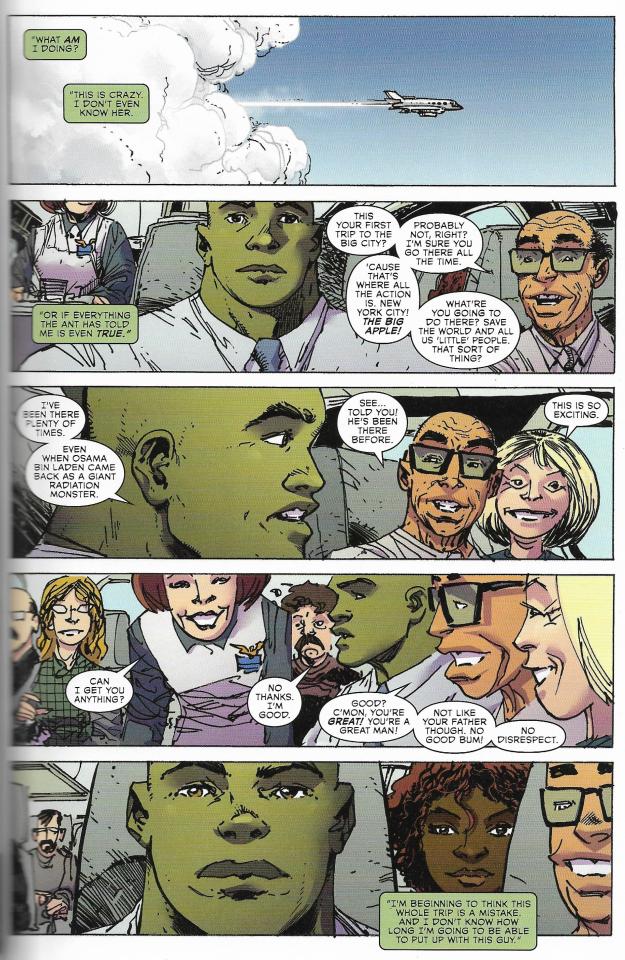
As usual, I prefer the ‘unfinished’ version (top) to the official release product (bottom).
*
Superman Giant #9, Erika Rothberg, ed.
&
Batman Giant #9, Robin Wildman, ed.
These are two of those 100-page DC superhero packages they sell for five bucks exclusively at Walmart (for now; later this year they’re gonna have them in comic book stores too), which marry one new 12-page story per issue with three full-length reprint comic books from elsewhere in the 21st century. I just wanted to know what was inside them. Here is what I found:
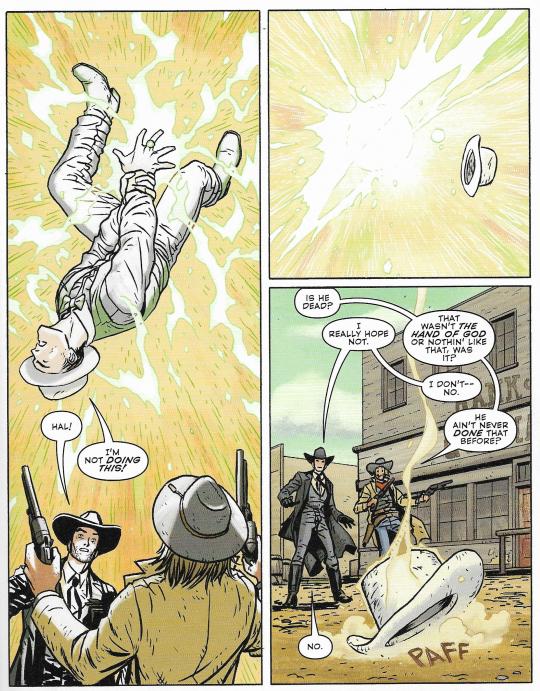
-The new Batman comic is written by Brian Michael Bendis as a very conspicuously all-ages prospect, where the story is about nothing more than what it’s about, and the title character is presented as a serious-minded but inquisitive and compassionate man of adventure. This issue -- just in time for the remix of “Old Town Road” featuring Billy Ray Cyrus -- Batman and Green Lantern travel back to the Old West, trade in their superhero outfits for cowboy clothes, and meet up with Jonah Hex. Nick Derington draws the heroes smooth and squinting with Swanian sincerity, and Dave Stewart colors it all bright and sunny. This is not my thing at all, but it’s confident to the point of acting like almost a rebuke to the rest of the book, where literally everything else is chapter whatever of a nighttime doom ballad drawn by either Jim Lee or something trying very hard to look like him.
-Like:
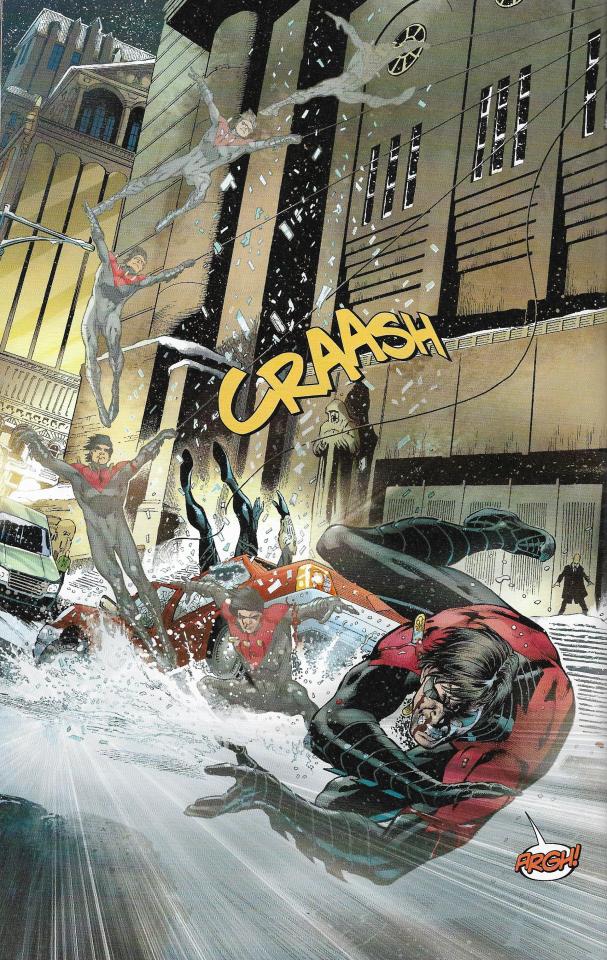

I can spot the differences, sure - if nothing else, reading superhero comics trains you to spot differences in otherwise similar things. But, there is absolutely an aesthetic at work. The top page is from an issue of “Nightwing” that tied into the 2012 “Night of the Owls” crossover in the Batman titles, produced by a seven-person drawing and coloring team fronted by pencillers Eddy Barrows & Andres Guinaldo. The writer, Kyle Higgins, has Dick Grayson fight his semi-immortal great-grandfather, who is an assassin for the Court of Owls: one of the more popular recent Batman organizations of villainy, presented here as a fascist group mediating society’s function through murder from the gray space between social classes. The Graysons, therefore, are the Gray Sons, but Nightwing resists the pull of destiny by winning a big fight, slinging the villain over his shoulder, and walking away toward a better future of just beating the shit out of bad people instead of killing them, I think. The Batgirl story -- from 2011, written by Gail Simone -- is comparatively orthodox, finding the character gripped with uncertainty about the superhero life and going about some downtime character-building activities, though most of it’s a big fight with a villain with a tragic past. The penciller, Ardian Syaf, kind of has trouble blocking the action so that characters’ movements are clear; I think Syaf is best known for having his contract with Marvel terminated in 2017 for slipping what were widely interpreted as anti-Christian and antisemitic references to Indonesian politics into an X-Men comic.
-There is a whole lot of Jeph Loeb among the reprints. He is not a writer who has been in critical fashion for much the past two decades, but he has undoubtedly sold a lot of comics for DC, and they probably feel he can do it again. The Batman book is serializing (deep breath) “Hush”, a 2002-03 storyline notable for its extraordinarily easy-to-solve central mystery, and generally being a taped-together excuse for Jim Lee to draw as many popular Batman characters as possible across 12 issues; it sold like hot cakes. The highlight of chapter 9 is probably a bit where a three person fight ends in one panel, and then one of the characters leaves, and then a second character wakes up from unconsciousness and also leaves, and then the first character comes back and nurses the third (also unconscious) character back to health, and then Batman arrives, all in the transition between the aforementioned panel and the next, which takes place in the same room; such is the befuddling desire to race ahead to more spectacle. Jim Lee (with Scott Williams and Alex Sinclair) is indeed Jim Lee (et al.) throughout, though at one point the team drops a howler of a swordfighting panel where Batman’s blade appears to grows to JRPG length due to what I think is the colorist filling two whoosh lines with the same hue as the swords.

Meanwhile, the Superman book is serializing a 2004 storyline from “Superman/Batman” -- the series where Loeb has Superman describe the action on the page with his own Superman-branded captions, and Batman does the same with Bat-captions, and Superman says tomayto and Batman says tomahto -- in which the late Michael Turner, one of the rock star 2nd generation Image artists, illustrates a new introduction for Supergirl. But this isn’t quite the same comic that was originally published... can YOU spot the difference?
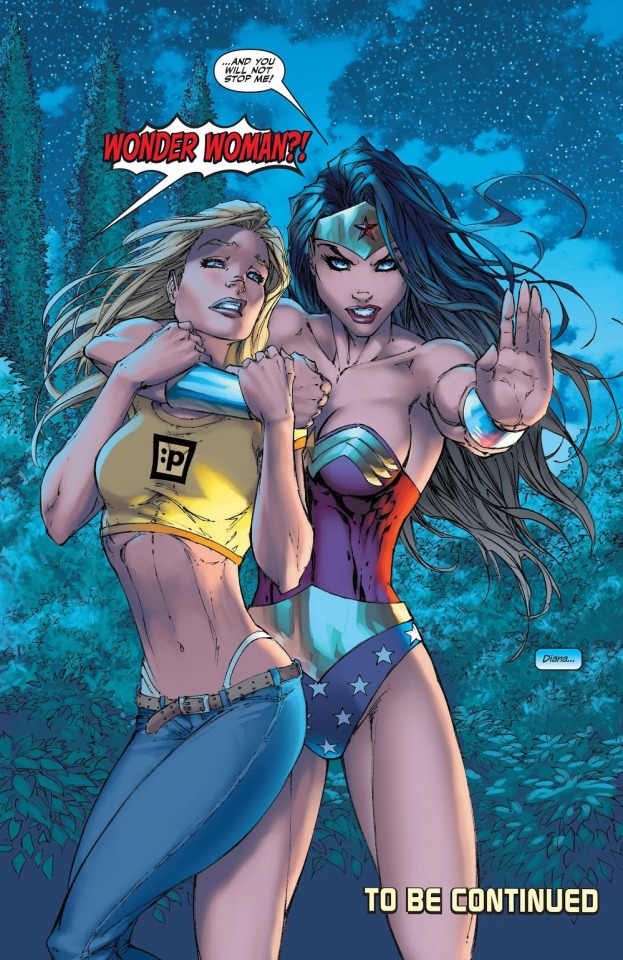
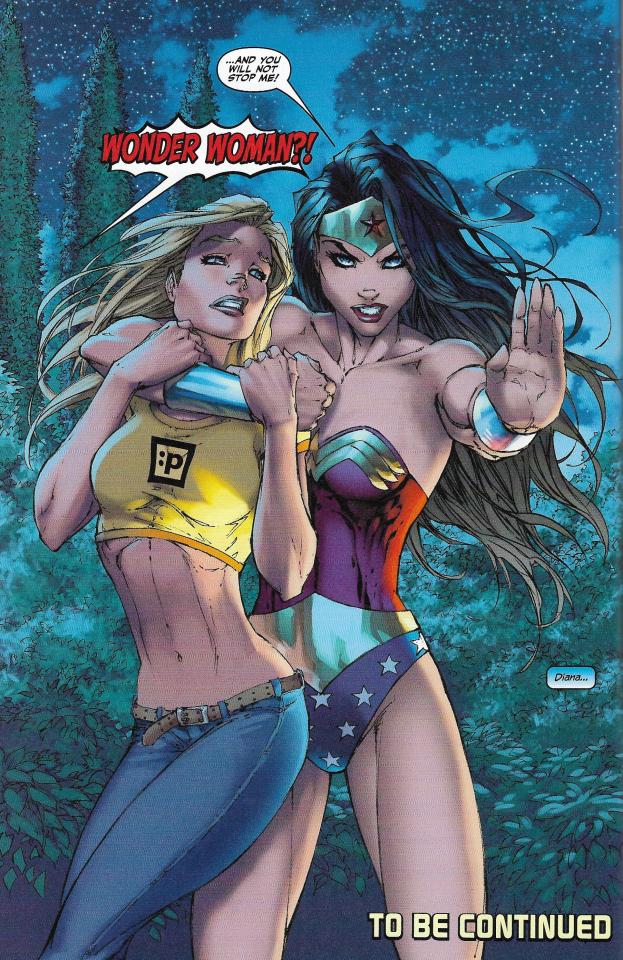
Is this like how Walmart won’t sell CDs that have an explicit content sticker, but with teen superhero g-strings? It’s hard to explain to younger readers how the low-rise/thong panties combo forever sealed the horniness of a generation of het male superhero artists into the late 1990s, and maybe DC doesn’t want to face that. Or, they’re just leery of how Turner slipping some peekaboo glimpse of Supergirl’s underpants or bare thighs into virtually every panel in which she is depicted below the waist might affect the marketability of the comic in 2019 - although I guess it could have happened in an earlier reprint somewhere too.
-The new Superman comic is a series of 12 splash pages depicting a race between Superman and the Flash. There is very little sense of speed, because Andy Kubert (inked by Sandra Hope, colored by Brad Anderson) draws the characters as frozen in time in a way that prioritizes muscular tension in the manner of contemporary superhero cover art; at one point the two characters part the sea with the force of their bodies, and it looks to me like they’re gesticulating in front of a theatrical backdrop. And, anyway, the story pulls back almost every other page to depict Batman standing on a ledge, or Lex Luthor in a sinister chair -- or some birds flying next to a building, or the Earth as viewed from space with streaks on it -- as the race occurs deep in the background or off to one side. The point is not excitement, but reflection, as imposed upon us by the between 13 and 21 narrative captions and/or dialogue balloons pasted atop all but the first page.
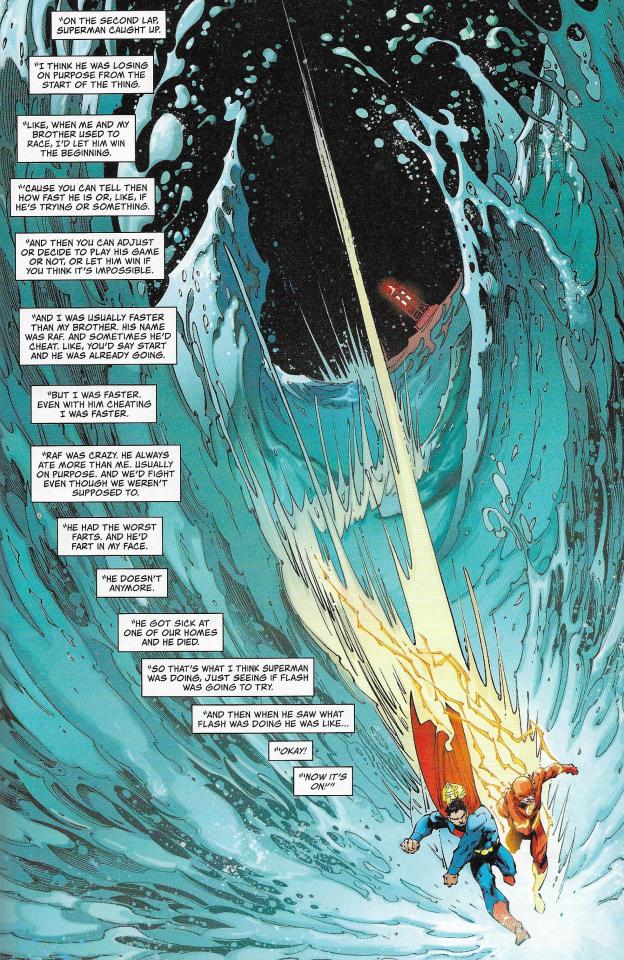
The writer is Tom King, whose “Mister Miracle” (with artist Mitch Gerads) gets a double-page advertisement later in the book, festooned with breathless blurbs from major media outlets. His narrator here is a little girl who is literally chained in captivity, clutching a Superman doll, and delivering her soliloquy in a manner of a superhero-themed TED talk with handclap repetitions on the nature of contradiction. Being faster than a speeding bullet is a CONTRADICTION. Being as strong as a locomotive is a CONTRADICTION. Leaping tall buildings in a single bound is a CONTRADICTION. Superman is about to lose the race, but then he wins, because to beat the Fastest Man Alive is... a contradiction. No wonder the GQ entertainment desk was blown away. DC comics do this kind of thing a lot, where they just have the writer tell you how great the characters are, and since you’re still reading superhero comics in the 21st century, you’re expected to pump your fists in recognition, because you and the writer and everyone at DC are just big ol’ fans... but I am not, because I am Jesus Christ, the only son of God.
-Elsewhere in the Superman book is an issue of “Green Lantern” from 2006, drawn by Ethan Van Sciver (inked with Prentis Rollins, colored by Moose Baumann), who is known today mostly as a conservative ‘personality’ online. He also netted more than half a million dollars last July in a crowdfunding campaign to make a 48-page comic book which he has not yet finished; funny to see an American right-winger on the French schedule. Funnier still to see the kind of people (mostly guys of a certain age) who mill around such personalities croaking about how diversity is ruining comics, because ALMOST EVERY FUCKING STORY IN BOTH OF THESE 100-PAGE BOOKS IS DRAWN BY EITHER SOME DUDE FROM THE 1990s OR SOMEBODY WORKING EXPLICITLY IN THAT STYLE, but - I guess when you’ve been pampered for so long, every paper cut feels like a ripped limb. Speaking of dismemberment, the writer here is Geoff Johns, who is often pegged as a superhero traditionalist, though he also has a grasp of gory pomp which occasionally pushes the comics he writes into a Venn diagram set with loud youth manga... at least in terms of how the action plays out, all broad and pained. So, needless to say, he’s currently writing “Doomsday Clock”, which is DC’s present attempt to extend the publication life of the valuable “Watchmen” property, so that they needn’t return it to the original creators, per the original writer, Alan Moore.
-To hear Alan Moore say it, the America’s Best Comics line was done on a work-for-hire basis as a means of ensuring prompt payment of the various creators from Jim Lee’s WildStorm, the original publisher. WildStorm was then acquired by DC (Jim Lee is now their co-publisher and chief creative officer), and Moore -- who has been (fairly) criticized in the past for taking ethical stances that cause financial harm to his artistic collaborators, who are in a less economically flexible position than writers in the comic book field -- allowed the line to continue under DC’s ownership, as to cancel everything would disadvantage everyone working on the titles. One of those titles, “Tom Strong”, was written by Moore and pencilled by Chris Sprouse for a while, and then there was a long line of guest creators, and then Moore and Sprouse came back when the ABC line wrapped, so that the concept could reach its logical termination point in an apocalyptic manner... Moore does love an apocalypse. The final story in the Superman book is a very recent, late 2018 issue of “The Terrifics”, in which we find an attempt to revive the DC-owned Tom Strong characters as players in broader DC stories. Jeff Lemire & José Luís are the primary creators. Jack Cole’s Plastic Man is there, as well as the John Ostrander/Tom Mandrake version of Mister Terrific. It’s a lot of offbeat characters; we even see Moore’s own parody of Hoppy the Marvel Bunny, because, I mean, Alan Moore does a lot of riffs on preexisting characters too, right? It’s a big blob of cartoon whimsy, filled with available characters running around. If they’re available, you might as well roll ‘em out, off the new releases rack and into a supermarket reprint package stacked in a box next to squeeze toys and discount Pokémon merchandise, which I bought, because it was really cheap.
-Jog
17 notes
·
View notes
Text

Plaza, Yuichi Yokoyama: Not a new translation, but the very newest book from the cacaphony king, published by 888 books, which also handled Yokoyama’s oversized hardcover art & design collection “Fashion and Closed Room” (2015) and the JP edition of his gekiga tome “Iceland” (2016). I did not know Yokoyama had a new book out in Japan until this twitter thread tipped me off - it’s a no-dialogue comic, and the publisher does international direct sales, AND they don’t mind English-language messages from dumb foreigners (or, they didn’t mind me), so dropping them a line would be the easiest way to get it.

This is not “Flower Garden”, the forthcoming third installment of Yokoyama’s gekiga tetralogy; it’s a 264-page large-format softcover, slightly taller than the average “Kramers Ergot”, with the kind of cranked-to-fuck reproduction that allows you discern the texture of the spotted blacks on the page. It won’t make much difference to those I’ve heard from irregularly over the past half of a decade who feel Yokoyama is an all-tricks artist who’s been plowing the same ground to increasingly barren results, but “Plaza” is something of a back to basics piece; while “Iceland” and its predecessor, “World Map Room”, explored slightly plottier interactions between paranoid characters amidst the usual din of life (to say nothing of the intervening gag manga collection “Room”, which I don’t think has yet been published outside of Japan), this new book is like a graphic novel-length version of the most methodical stories from “New Engineering” - activity under a fixed gaze.

But Yokoyama is not the same artist he was in 2004. While his “New Engineering” comics gazed dispassionately upon activities left inscrutable on any level more complex than ascertaining the motion of bodies in combat or the construction of a room — a consequence of the artist creating his stories by drawing forward and backward from key images, avoiding ‘humanism’ so as to escape the impotency of art as personal expression, per him — “Plaza” erects an absolute terror field from the clamor of social joy. Not a single panel of this book is without gigantic sound effects slashing across space with razor edges, COROCOROCOROs and DODODODODOs superimposing themselves atop rolling and marching forms like the reader is gazing through an impossible floating lattice; a prison of noise. And it’s a party on the block!

Apparently inspired by Brazilian carnaval, the action of “Plaza” depicts a massive, unreal stage show, with cheering audience members frequently visible toward the bottom of panels. Banners are unfurled, effigies are raised, rockets ignite, and folkloric skits are enacted. At one point, money is thrown into the crowd like the Joker did “Batman” (1989), though we need not imagine any threat: the roaring crowd is constantly in danger. Enormous trees crash into the audience, they’re nearly chopped by a gigantic swinging blade - at one point a swarm of bees is loosed upon them, yet still they roil in a frenzy as rows of figures stride above them like a martial fashion show-cum-Busby Berkeley dance number roiling with smoke and fire, English titles occasionally superimposed atop the action to demarcate exhibits, but this is not like Yokoyama’s story collections. It’s not like “Travel”, his depiction of a rail journey, and the closest thing he’s had, I guess, to a popular favorite. It takes the sense of specific menace he introduced to his world in “World Map Room” (his best book, along with the majesterial “Color Engineering”), makes that menace integral to the idea of fun, and depicts it as something with no beginning or end. You can read this book starting at any point, which I suppose makes it high formalism, and imagine it never dying, and never being born. Is this Spectacle? Is this the idea Yokoyama has, of life as a fenced rampage of distraction wedding high spirits and mass violence as the unyielding character of existence? The artist stands aloof, but it’s hard to be a god.

24 notes
·
View notes
Text
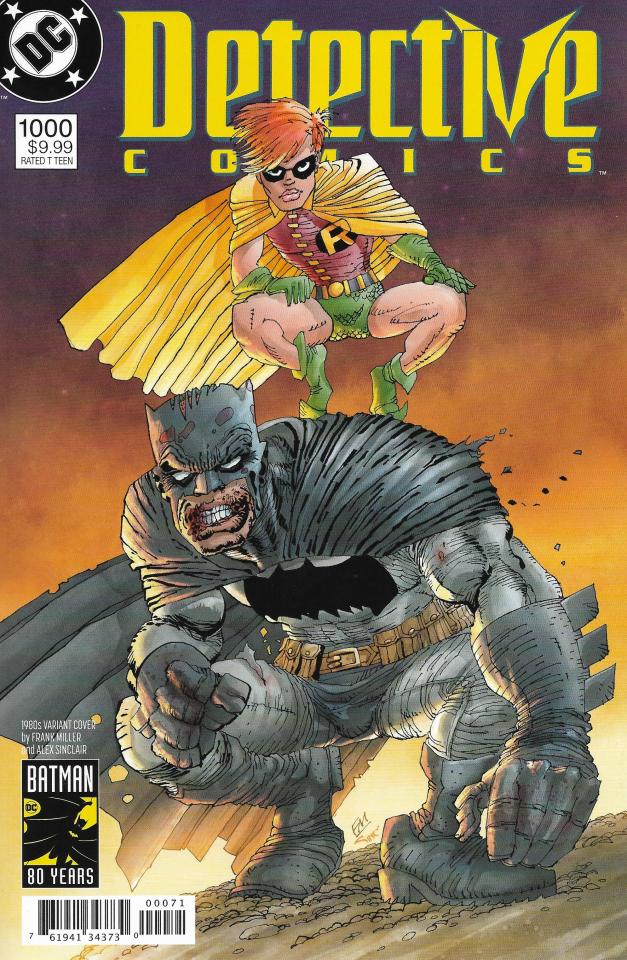
Detective Comics #1000, Chris Conroy & Dave Wielgosz, eds.: I bought this on impulse because it was on the new releases shelf and people were talking about Batman online. It’s a 100-page anthology tribute for the Batman character’s 80th year and the one thousandth issue of “Detective Comics”. I don’t think anyone is ever at their best in a tribute anthology, but that makes them kind of interesting to look at, you know? There are eleven stories, which I will now spoil in their entirety.
1. “Batman’s Longest Case”, Scott Snyder, Greg Capullo, Jonathan Glapion, FCO Plascencia, Tom Napolitano: The first of two stories in which Batman is doing something that looks grim, but is actually happy and anniversary-ish - both with similar titles, and both from major Batman writers. This is the better one, because I think Capullo is an interesting artist. He’s comparable to Jae Lee, in that he’s someone who had some work in comics under his belt prior to being ushered into the second ‘generation’ of popular Image artists, and has continued to evolve quite vividly over the years. The Capullo of today dials up the use of shadows and silhouette that used to sort of decorate the folds of Spawn’s flowing cape and such - here, they’re used more to focus attention on storytelling fundamentals: geography; gesture; etc. I also generally like the colorist, FCO Plascencia, who’s done some Varleyesque color-as-mood work on earlier comics with this team, though the story here is subdued... very classy, dressed for the gala.

Hints of ‘90s grotesquerie only pop up once Batman has solved a large number of flamboyantly abstruse riddles and discovered that the titular Longest Case is really an initiation test fronted by wrinkly old Slam Bradley, the original Siegel & Shuster-created star of “Detective Comics” back in 1937, who welcomes Batman to a Guild of Detection. This is clever of the writer, Scott Snyder, because Batman as a basic concept is hugely derivative of earlier pulp, detective and strip hero characters - and, if you’re being honest about paying homage to the character’s origins, you might as well play up lineage as your metaphor.
2. “Manufacture for Use”, Kevin Smith, Jim Lee, Scott Williams, Alex Sinclair, Todd Klein: In contrast, this story shoots for the quintessential. Smith, of course, is the filmmaker and longtime geek culture celebrity who’s written comics off and on, so maybe it’s his distance from the continuum of superhero writing that has inspired a short story that could have run as a backup in any Batman comic since the 1970s, give or take few cultural references. Matches Malone (Batman, when he is being an undercover cop) descends into the secretive world of true crime memorabilia to buy the gun that killed Bruce Wayne’s parents, which he then melts down to form the metal bat-symbol plate Batman wears on his chest, verily steeling his heart with the memory of this tragedy to fortify him in his neverending battle against crime! NANANANANANANANA BATMAAAAAN! Jim Lee and his usual crew makes everything look like it’s ‘supposed’ to, provided you see this type of statuesque posing as the best sort of superhero art, which many DC comics readers presumably do, given how a lot of these things look.
3. “The Legend of Knute Brody”, Paul Dini, Dustin Nguyen, Derek Fridolfs, John Kalisz, Steve Wands: Dini has written tons of comics, with not a few of those drawn by Nguyen, but this feels mostly like DC1k (acronym’s resemblance to “DICK” a purely innocuous reference to Nightwing, I assure you) acknowledging the extensive legacy of “Batman: The Animated Series”, on which Dini was a writer and producer. The story takes the form of a biography of an infamously clumsy hired thug for supervillains, whom even the most novice reader will have figured out is a Batman Family asset about halfway down page 4 of 8, leaving a whole lot of laborious and narration-heavy slapstick to wade through. Admittedly, this might work better as an animated cartoon, with voice acting leavening the pace of the gags, but I’m also not sure ‘this would be better in a different art form’ is the impression superhero comics should be giving right now.
4. “The Batman’s Design”, Warren Ellis, Becky Cloonan, Jordie Bellaire, Simon Bowland:

Most of the drawing in DC1k is the kind of stuff you can easily trace to a few popular and fairly narrow traditions of ‘realistic’ superhero art. Becky Cloonan is the only woman to draw an entire comic in here -- Joëlle Jones co-pencils a story with Tony Daniel later on, and Amanda Conner does a pinup, mind -- and her work is the only place in this book where you catch glimpses of a global popular comics beyond the superhero provinces in the Hewlettian wild eyes of the hapless human opponents of her Batman, lunging through velvet layers of cape and smoke, lipless mouth parted on a shōnen ai jaw. It is really very impressive.

The writer, Warren Ellis, does a pathos-of-the-hard-man story, in which Batman explains his combat strategies via narration while carrying them out, occasionally making reference to the medical bills his prey will incur and their timely motivations as terroristic white men who feel ignored by the world, and at the end Batman asks the last guy U WANT TO LIVE IN MY NIGHTMARE, LITTLE BOY and the guy is like n- no dr. batman sir, and gives up because Batman’s is too dangerous and scary a life model. It is made clear from the text that Batman has programmed himself into a system of reactionary violence that he inevitably reinforces, but this message is so heavily sugared with cool action and tough talk that the reader can easily disregard such commentary, if so inclined, which has been a trait of Ellis’ genre comics writing since at least as far back as “The Authority” in the late 1990s. It fits Batman as naturally as the goddamned cowl.
5. “Return to Crime Alley”, Dennis O’Neil, Steve Epting, Elizabeth Breitweiser, ‘Andworld Design’: I was surprised that there weren’t other writers from across the Atlantic in DC1k, given the extensive contributions of Alan Grant and Grant Morrison to the character. I was maybe not as surprised to see Dennis O’Neil as the lone credited writer to pre-date the blood and thunder revolution of Frank Miller et al. in the mid-1980s, as that commercial shadow is far too long to escape. Of course, O’Neil was one of the architects of superhero comics as a socially relevant proposition and Batman as a once-again ‘serious’ character in the 1970s, and it may be a reflection of his standing as a patriarch that this story contains no sugar whatsoever: on the anniversary of his parents’ death, Batman is confronted by a childhood caregiver who has figured out his dumb secret identity, and castigates him for doing stupid shit like dressing up as an animal and punching the underclass when he could actually do something as a wealthy man to improve the world. Then Batman starts beating the shit out of young masked teens who have stolen a gun, after which Batman, who is also a masked thug, is told that he is, at best, a figure of pity. The end!
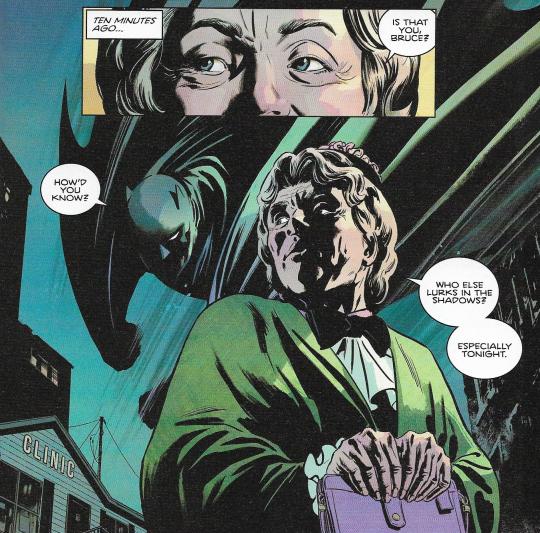
What emerges from this story, to my eye, is that Batman is a terrible fucking idea if examined with any sort of serious realism - and Steve Epting draws the story as close to photorealism as anything in this book gets. I also think it is not insignificant that O’Neil, the writer here most unplugged from superhero comics as a commercial vocation, is the one to make these observations; to believe in superhero comics is to understand that there is play at the heart of these paper dolls, and to make your living from these things is to contemplate new avenues for play. Maybe Batman is dark, obsessive! Should he... kill? Sure, Bill Finger made him kill. The Shadow killed lots of dudes. So did Dick Tracy. Ramp up the verisimilitude too much, though, and you’ve got a guy wearing a hood going out by the cover of night to scare the shit out of superstitious cowards who’ve been taking from the good people of society, which, in terms of motivational narratives, is the same origin as the Ku Klux Klan. To play nonetheless, is the craftsman’s burden.
6. “Heretic”, Christopher Priest, Neal Adams, Dave Stewart, Willie Schubert: Meanwhile, on the other side of the coin, is veteran Batman artist and frequent Dennis O’Neil collaborator Neal Adams. And while Adams is not credited as the writer on this story, it bears all the hallmarks of his 21st century work at DC: whiplash pacing; uneasy expository dialogue; and eager callbacks to Adams’ earlier work. This is the Batman comic as a continuity-driven adventure, and I found it largely incomprehensible as a story, not unlike Adams’ recent “Deadman” miniseries. I still like his husky Batman, though.

7. “I Know”, Brian Michael Bendis, Alex Maleev, Josh Reed: Hey, did you know Brian Michael Bendis, writer of approximately ten and one half zillion Marvel comics, is writing comics at DC these days? Here he teams with longtime collaborator Maleev for a story that brings to mind the old line from Grant Morrison’s & Dave McKean’s “Arkham Asylum” about Batman being the real person and the guy under the mask being the mask. The Penguin, of all villains, figures out Batman’s secret identity, but elects not to pursue Bruce Wayne in his private life, because destroying Bruce Wayne would create a pure Batman far too dark and twiztid for anyone to handle. Or, maybe that is all just an image the perfectly sane Batman has deliberately encouraged as part of his umpteenth contingency plan. I would argue that this is a gentle spoof of people taking Batman too seriously, which clicks with what I’ve read of Bendis’ idea of the character in those 100-page comics they sell at Walmart: a globetrotting detective-adventurer, appropriate for all ages. Bear in mind, I’ve read maybe 0.2% of all Brian Bendis comics.
8. “The Last Crime in Gotham”, Geoff Johns, Kelley Jones, Michelle Madsen, Rob Leigh: Whoa, now we’re talking! Kelley Jones! Just look at this:
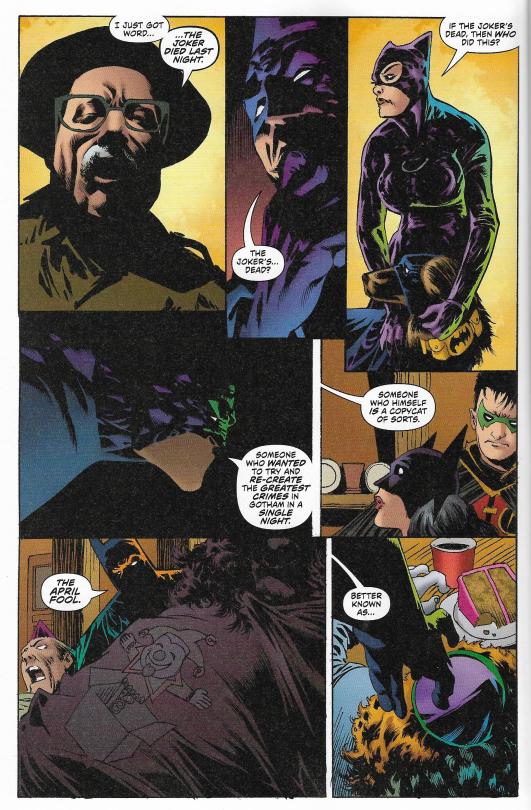
Such totally weird stuff, coming from the artist who drew all those classic ‘90s covers with the huge bat-ears and wildly distorted musculature, the cape this absurd, unreal shroud. It looks like he’s working from photo reference with some of this comic, but also just tearing out these drawings of huge jawlines and shit, this total what-the-fuck-is-going-on haze, which perfectly matches Geoff Johns’ furiously ridiculous story about an elderly Batman and his wife, Catwoman, and their daughter, and Damian, and a dog, who all investigate a mass murder that turns out to be the Joker’s son committing suicide, and then Batman unplugs the Bat-Signal because crime is over in Gotham forever, and then we find out it’s all the birthday wish of Batman, who is blowing out the candles on his birthday cake, in costume, in the Batcave. Is “Doomsday Clock” like this? Should I pirate it??
9. “The Precedent”, James Tynion IV, Alvaro Martinez-Bueno, Raul Fernandez, Brad Anderson, Sal Cipriano: Inevitably, we come to the story that argues that Batman is actually a great guy, and his pressing of children into action as vigilantes under the cover of night is an amazingly positive thing. This is what I mean by “play” - it doesn’t literally make sense, we all know that, but if you buy into the superhero idea, you can buy into this universe of metaphor where the Batman Family is a vivification of finding your company of people, and belonging, and being loved. Lots of talk in here about snatching young people out of the darkness and forging them in light, and helping them find a better path - it sounds like Batman is signing these kids up for the Marine Corps, which is one of several organizations that recognizes the power of these arch-romantic impulses.
10. “Batman’s Greatest Case.”, Tom King, Tony S. Daniel, Joëlle Jones, Tomeu Morey, Clayton Cowles: This is just unbearable. Oh god, what absolute treacle. It’s the second story in this book about Batman being serious and mysterious, but it turns out something nice is going on - he really just wants a photo of the whole Batman Family, because he lost his family when his parents got shot, but then he cracked his greatest case by finding a new family, which is the Batman Family!
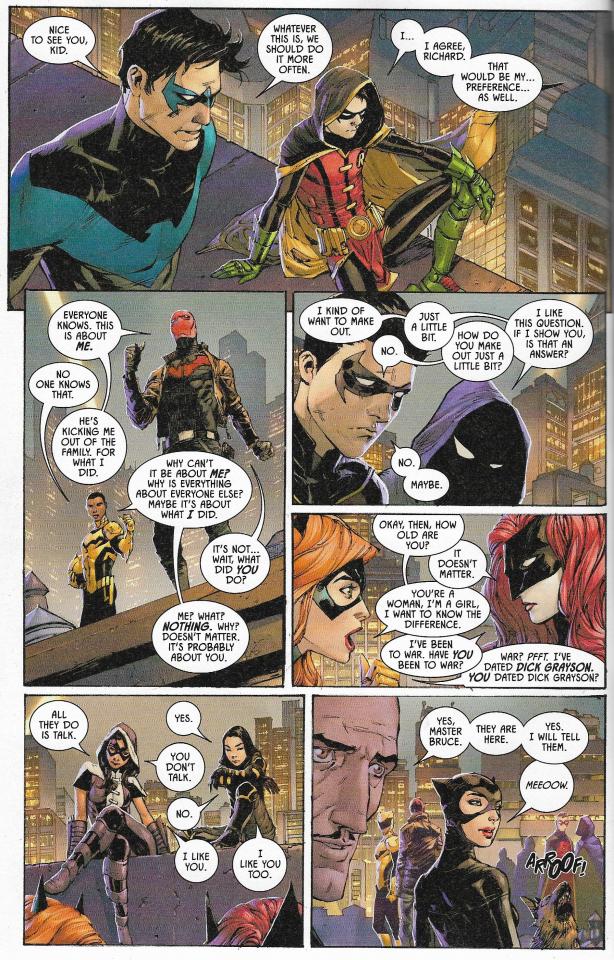
All of this is communicated via clipped dialogue in which various Batman Family superheroes trade faux-awkward quips and cutesy ‘moments’ that are supposed to embody the endearing traits of the characters, but read as the blunt machinations of art that is absolutely desperate to be liked. This is art that is weeping on my shoulder and insisting I am its friend, and I want to get away from it, immediately. Tom King is the most acclaimed superhero writer of this generation, and I can only presume his better work is elsewhere.
11. “Medieval”, Peter J. Tomasi, Doug Mahnke, Jaime Mendoza, David Baron, Rob Leigh:

Finally, we have the obligatory story-that-leads-into-next-issue’s-serial, thereby demonstrating that Batman endures. It’s done as a series of 12 splash pages, depicting Batman in battle with his greatest foes, and it benefits immeasurably from the presence of artist Doug Mahnke (some inks by Jaime Mendoza), whose been a favorite of mine since those early, blood-splattered issues of “The Mask” at Dark Horse decades ago. Broadly speaking, Mahnke is working in a similarly muscular vein as many contributors to DC1k, but his sense of composition, of spectacle -- that boot-in-the-face energy the British call thrill-power -- adds an important extra crackle, and an element of humor; his Batman looks like a hulking maniac dressed in garbage bags, beating the shit out of monster after leering monster. What we are seeing is the fevered imagining of a new villain, the Arkham Knight (a variant of a character introduced in a video game), whom writer Peter J. Tomasi characterizes via the old trick of having the villain narrate to us a bunch of familiar criticisms of the hero, which the hero will presumably react to and overcome, or acknowledge in an interesting way, or something, in future installments. This probably would have worked better if other stories in this book hadn’t already made a lot of the same points in a manner that is not an advertisement for the rebuttal of those points... or if I were even capable of reading a story like this without imagining a final dialogue bubble coming in from off-panel going “SIR, THIS IS A BURGER KING DRIVE-THRU.” But something’s gotta go in issue #1001.
-Jog
12 notes
·
View notes
Text
Some American Comics, 3/27/19

Jesusfreak, Joe Casey, Benjamin Marra, Brad Simpson, Rus Wooton, Sonia Harris: Or, ‘The First Temptation of Christ’. This was recently controversial on Fox News and among those certain greater media outlets keen on tracking culture war stuff, but it’s really just a hard PG-13 adventure story that does what Asian comics have done with epic books like “Journey to the West” for decades, i.e. slap the clay of the source material into the shape of more recent popular entertainments. In fact, and moreso than the ‘action comix version of the New Testament’ angle, what’s notable about “Jesusfreak” is that it adds an extra layer of artifice by employing an idiom reminiscent of Bronze Age U.S. comic books, like Marvel’s “Master of Kung Fu” under Doug Moench & Paul Gulacy, or dawn-of-the-direct-market indie genre fare like Gulacy’s and Don McGregor’s “Sabre” - comics marked by a keen interest in popular media outside of comics (SFF novels, genre movies, commercial illustration) and an often very earnest, purplish narrative approach. This isn’t guesswork; there’s an essay in the back of the book that pretty much spells this out, positioning the mid-’70s as the last time the classic American comic book was both genuinely a player in mass media, and artistically adventurous. I personally don’t feel much attachment to comics of this period, though I have read a bunch of them; in terms of English-language work, I prefer the British stuff of the same period, from magazines like “Action” or early “2000 AD”, which interfaced with outside media by seizing their concepts wholesale and presenting them in as screaming-loud a manner as imaginable. U.S. comics of the time feel very cautious compared to those, unless we’re including the counter-mainstream of late-period b&w horror magazines, which mostly consisted of Spanish artists drawing charcoal swirls around glamour models while the writers and/or editors vamped out 467-word text captions about the hopelessness of life. That was also good. Doug Moench wrote some of those too.

As a result, “Jesusfreak” can readily be compared to works by Michel Fiffe, or Tom Scioli, or Ed Piskor, all of whom take inspiration from ‘70s or ‘80s American comic books, and put that inspiration to different ends. The writer here is Joe Casey, who’s been around for a long time, though I most readily associate him with certain off-center mainstream comics from the ‘00s; his is a more chameleonic style, and as a result the book reads like more a straightforward pastiche than those of the artists above. A dark-skinned Jesus grimaces from the pain of visions, working construction on properties rules over by fair-skinned Romans: houses where he can never live. Abusive soldiers attack religious worshippers, and Jesus fights back with lethal karate power! Older comics would boldface their social relevance in pulpy terms like this, and so it goes as Jesus confronts an Edenic snake-with-legs Satan in a Bruce Lee/Chuck Norris “Way of the Dragon”-type colosseum martial arts duel, which the devil intends as a premonition of all the violence to be done in the Christ’s name in later history. It’s a little cleverer than it looks, but when I see the drawings of Benjamin Marra — blown out under a permanent desert haze via colorist Brad Simpson — I recall the finale of his solo book “Terror Assaulter: O.M.W.O.T.”, which takes the absurd macho combat fantasy devices of its own earlier chapters and keys them to specific alpha male behaviors in the lives of the types of men who need these fantasies: ideals that invariably leave them unhappy and maladjusted. Marra, I think, is underestimated in his ambivilance toward what he depicts, and those struggles are more vivid to me than poppy provocations such as this.
*
Go-Bots #3 (of 5), Tom Scioli: Speaking of which - I am now two full issues behind on Scioli’s new robot hallucination, but I’m getting there! This issue has what the anime fans call a timeskip - a leap forward many years, to a place where rogue transforming vehicles are now the dominant species. I love how Scioli draws the humans in this issue: tiny, scampering things, speaking in a uniform, childlike voice, all soft and squishy inside the cold steel combatants. Our toys are now a security apparatus, but we still look like we’re playing.

-Jog
7 notes
·
View notes
Text
Dreadstar #1-2
Dreadstar #1 (1982 – I read the newsstand edition of #1, published 1985), Epic Comics
By Jim Starlin. Colors by Glynis Oliver

Dreadstar #1 opens with a long, long, long ten-page recap. Vanth Dreadstar is a refugee from the Milky Way, which has been destroyed by war. He settles on planet Nimbus in the Empirical galaxy, where he tries to forget his old life and live in Peace. But, inevitably, war comes to Nimbus, anyway. A Monarchy starship lays waste to the planet leaving Dreadstar, Syzygy Darklock (a powerful magician), and Oedi, cat-human hybrid and a farmer, as the only survivors. They vow to end this war, and become the core of the rebellion against the war. They are joined by Willow, a blind cybernetic telepath who can see through the eyes of her pet space monkey, and later by Skeevo, a smuggler.
The war is between the Monarchy and Instrumentality. The Monarchy, is what it sounds like, a feudal dynastic monarchy ruling half the galaxy. The Instrumentality is a powerful religious order led by Lord High Papal. They have taken over the other half of the galaxy. Now the two powers struggle for supremacy over the Empirical galaxy. It’s clear that Starlin is playing around with classic themes of authoritarian dominance, whether monarchic, or religious, doesn’t matter. He sees both as two sides of the same coin. Both are wrong, and the struggle between them kills innocents. Dreadstar & crew need to free the Empirical, both literally and figuratively.
The first issue is a heist. The crew attack an Instrumentality space station which is full of precious metals. Vanth wants the hoard of wealth to give them the funds to escalate their struggle against both sides.

Starlin draws the crap out of this issue. The environments are fully realized, and the crew fight hundreds of robots, all rendered on the page without too many shortcuts. I’ve always liked the way Stalin plays around with the grid. He’s unafraid to chop the grid into small slivers, to give the action an added urgency. He really likes density on a page. All the pages have either a lot of panels, or are rendered with a lot of detail. He also doesn’t skimp on text. He really wants to pack a lot of information into the comic. The result is a pretty satisfying read. Even if the intro info dump is a little much, you come away immersed into a huge story. It made me pretty excited for issue 2.
The whole thing is really reminiscent of Star Wars. It checks all the same boxes. Science-fantasy, check. Mystical swords and powers, check. Empires bent on domination, check. A scrappy crew caught in the middle, check. A furry companion, check. You can keep going and keep finding more similarities. And it makes sense. Star Wars made space opera fantasy really popular at that time, and many comics around that time featured high adventure in space (Omega Men, Star Jammers, Alien Legion, among many others). But Starlin is an idiosyncratic creator and he does make it his own. He injects his favorite themes: mysticism, religion, authoritarianism, and a sense of cosmic grandeur. A lot here is reminiscent of Warlock & Captain Marvel, his 70’s psychedelic cosmic comics for Marvel. Dreadstar takes all these concepts, themes, character types, and mashes them into a huge sprawling space epic that is all his own.
Dreadstar #2
After loading up on cash in the first issue, Dreadstar & gang continue their rebellion against the 200 year war between The Monarchy & The Instrumentality. The 2nd issue focuses on Willow, the blind telepath. She can read and affect the minds of humans and machines. We start out with Willow being a total badass as she effortlessly takes out a squad of military police that endanger their mission. We see how valuable she is to the Dreadstar crew. Very quickly she retreats in her private quarters and begin to ruminate on her life, which of course means we’re about to get Willow’s origin story. She joins up with Dreadstar after he rescues her in another operation (these events were apparently told in Epic Illustrated). She chooses to leave her unhappy life, and stowaways in Dreadstar’s spaceship. When she’s discovered, she has a powerful psychic outburst. Vanth & Syzygy decide that having a telepath onboard could be useful, so they decide to keep her around. Syzygy trains Willow how to use her mental powers, but she has some kind of mental block that prevents her from reaching full potential.

Most of this issue is an excuse for Starlin to go all Ditko on the art. Much of the training sequence with Syzygy and Willow, takes place on various astral and mental planes, mystical dimensions, and other realms. Panels are full of the kind of cosmic psychedelia Steve Ditko pioneered in Doctor Strange and other books. Starlin has always been into this stuff. Warlock was full of Ditkoesque psychedelic touches. We’re treated to squiggly cosmic pathways, portals to unknown dimensions, and blinding white energy emanations that are the ‘force that dwells within all of us.’
Syzygy manages to identify Willow’s block: She was sexually abused by her father (this proved to be very controversial in future letters columns). To overcome her trauma, she enters—against Syzygy’s warning—the white energy of her soul only to be permanently blinded. But she triumphs over her traumatic blocks and becomes a powerful telepath. She accepts the trade-off: blindness for power. Dreadstar gifts her a space monkey, and now, by seeing through the animal, she’s not so blind either. The white light stays with her, and in times of need she can call upon it. I’m enjoying this so far.
Tom K @transatlantis

25 notes
·
View notes